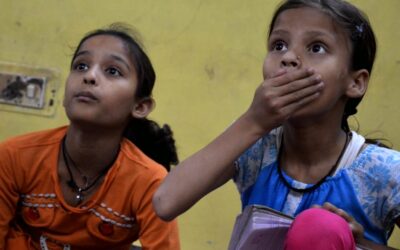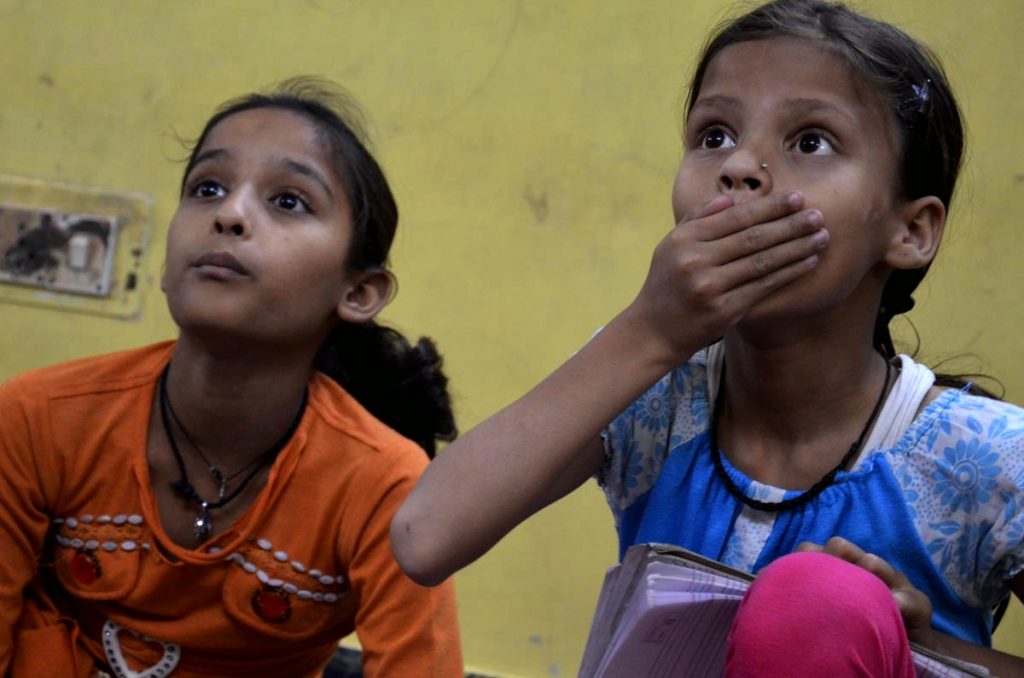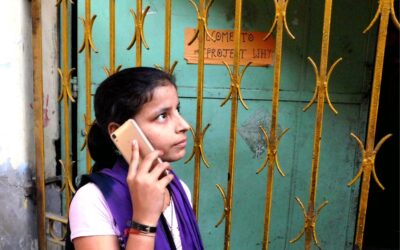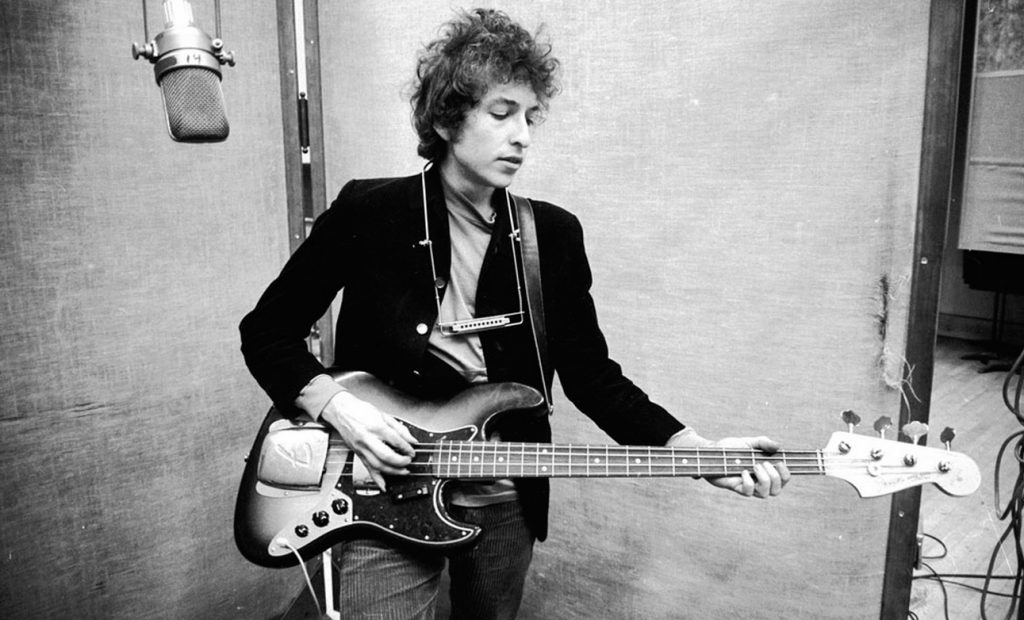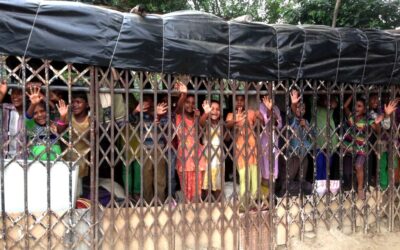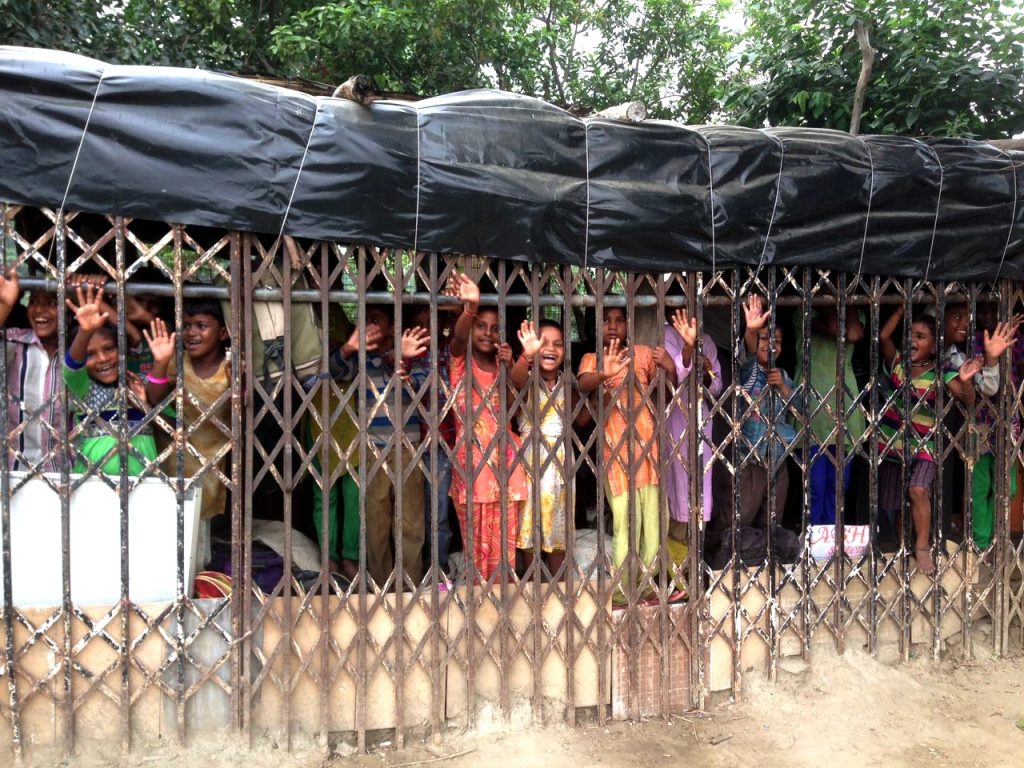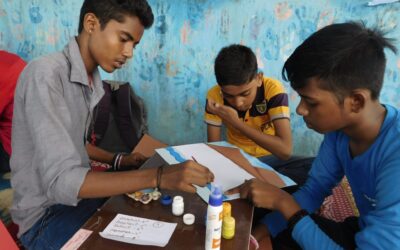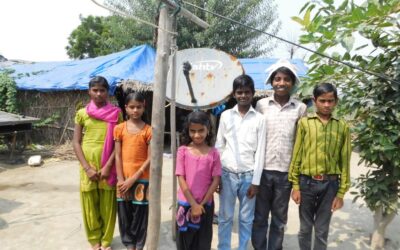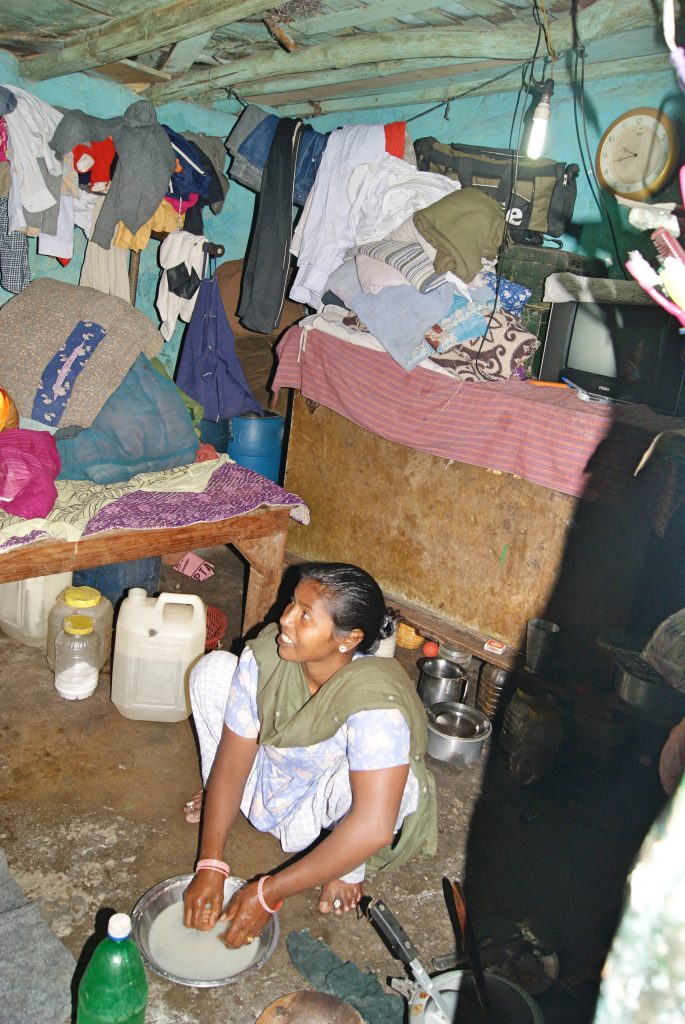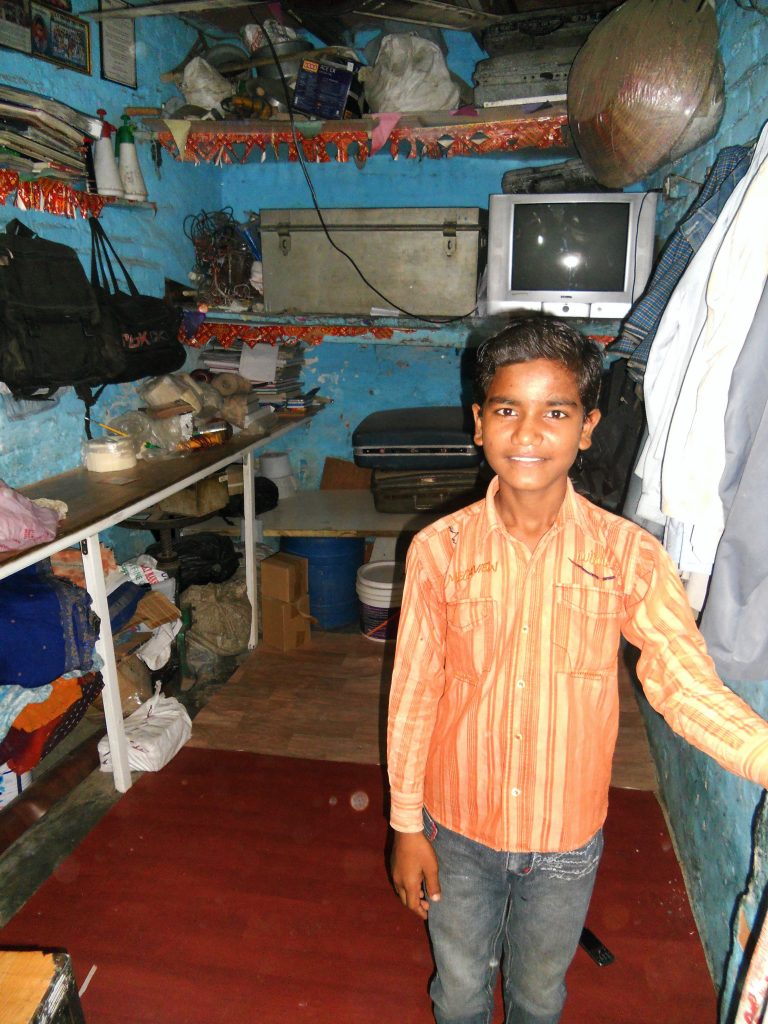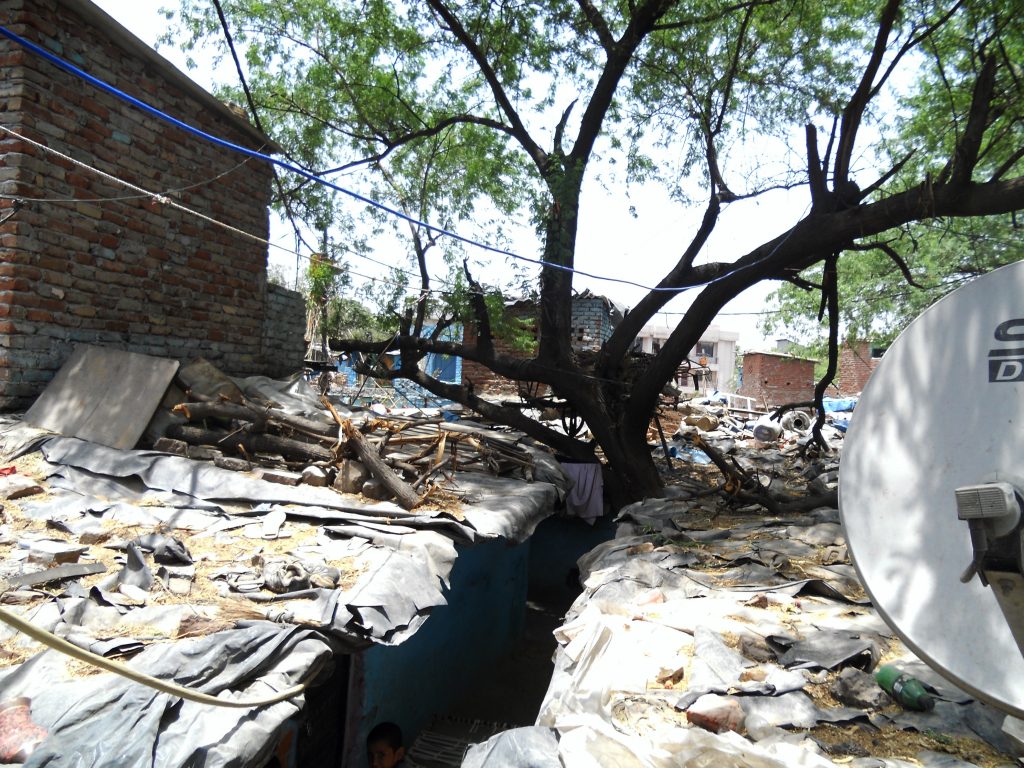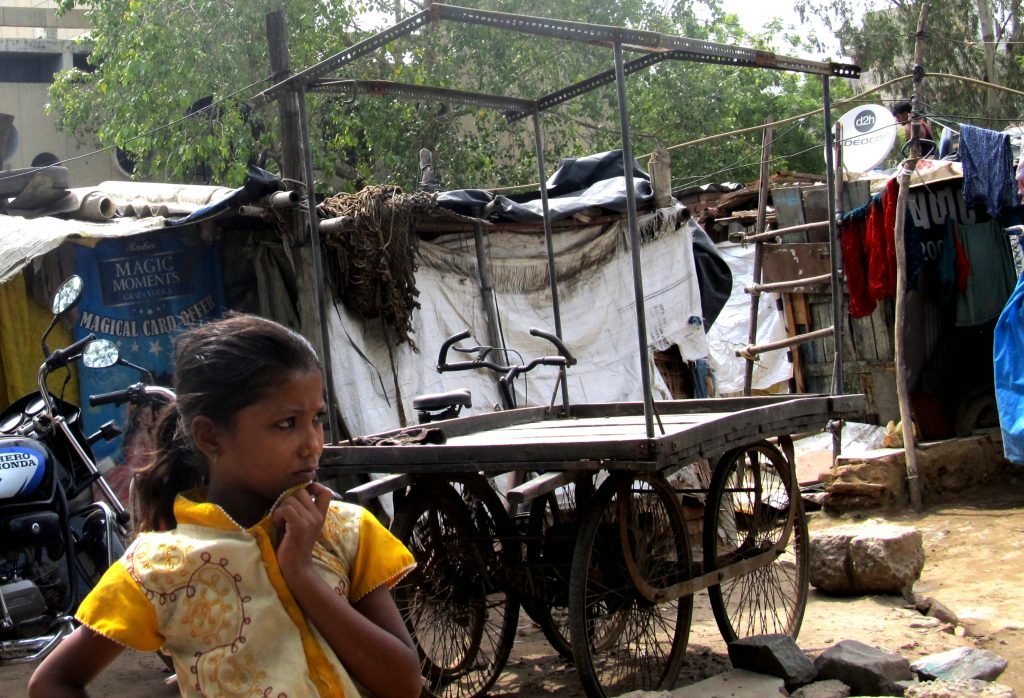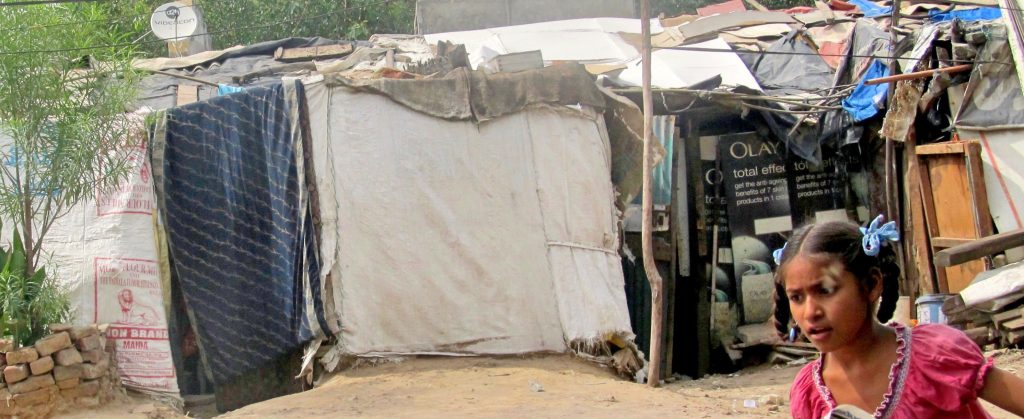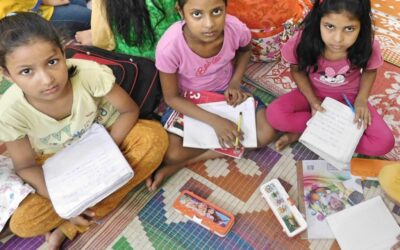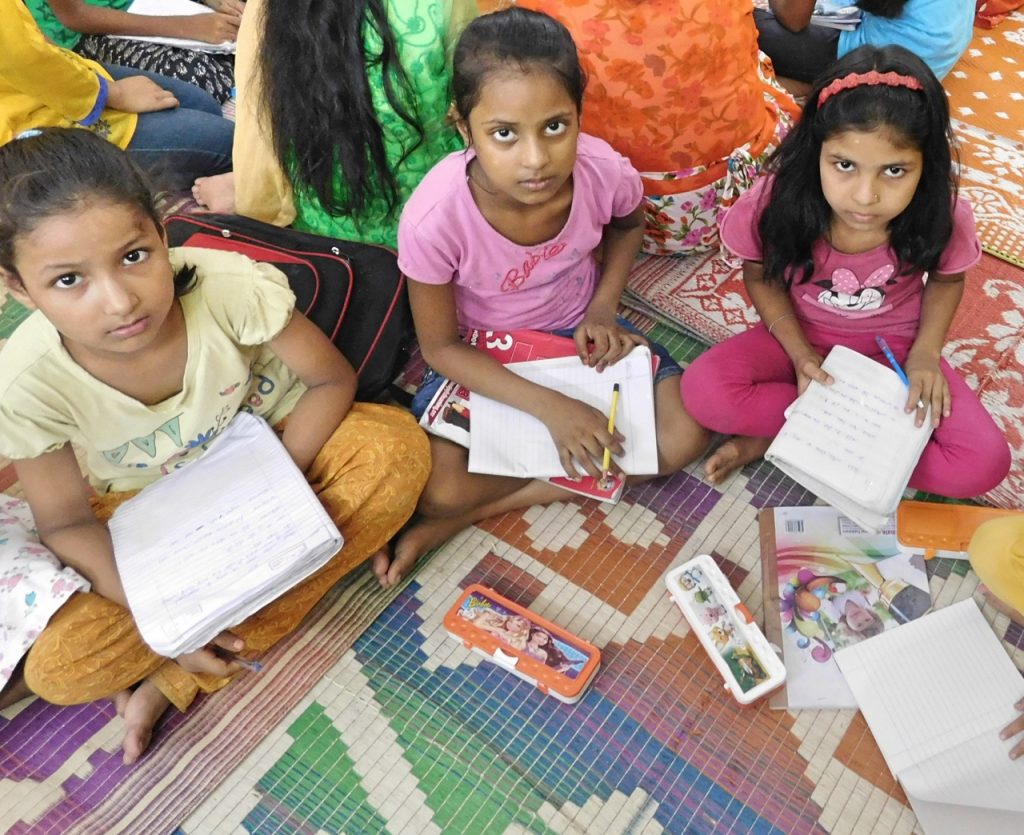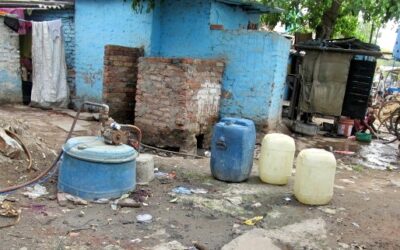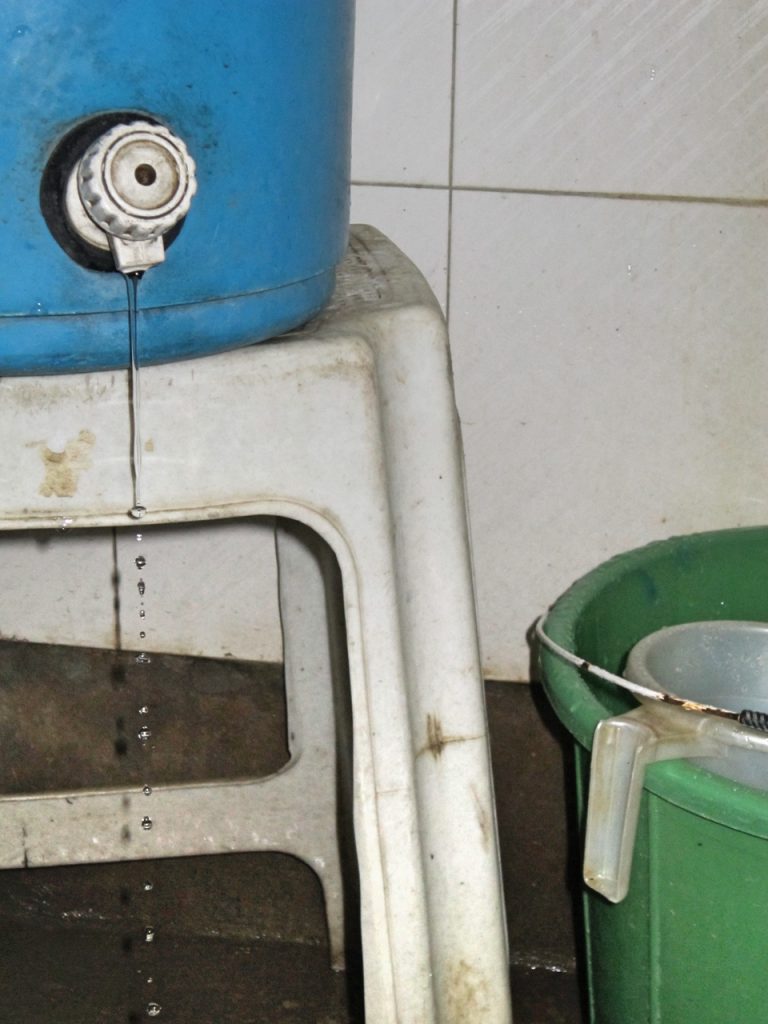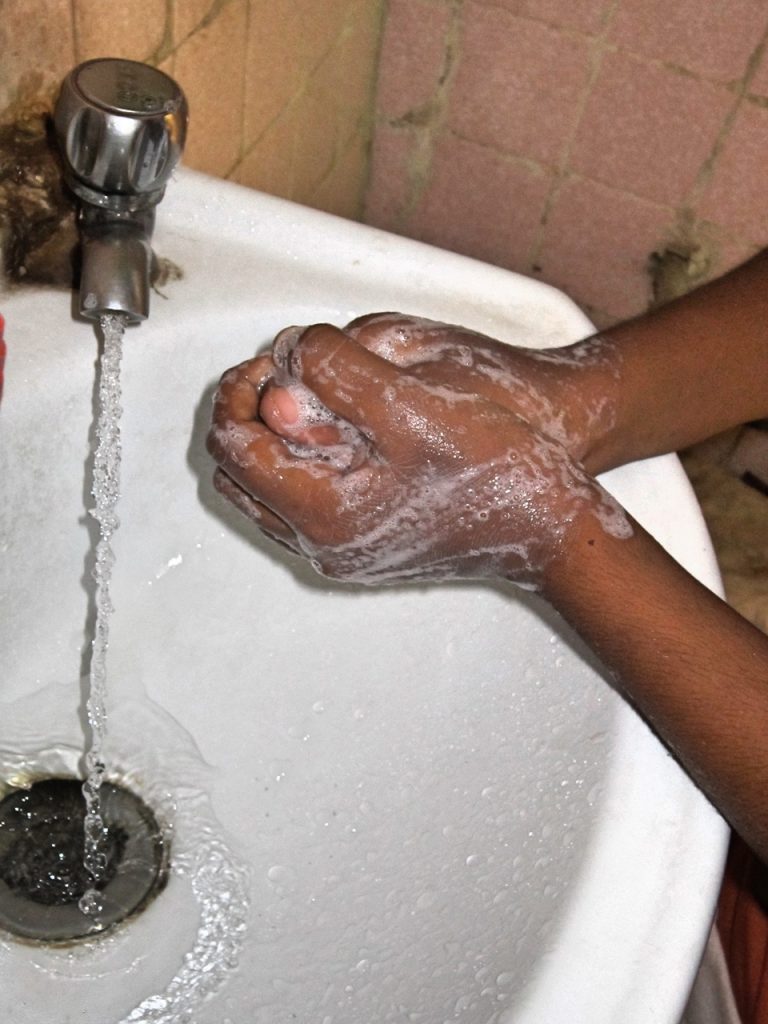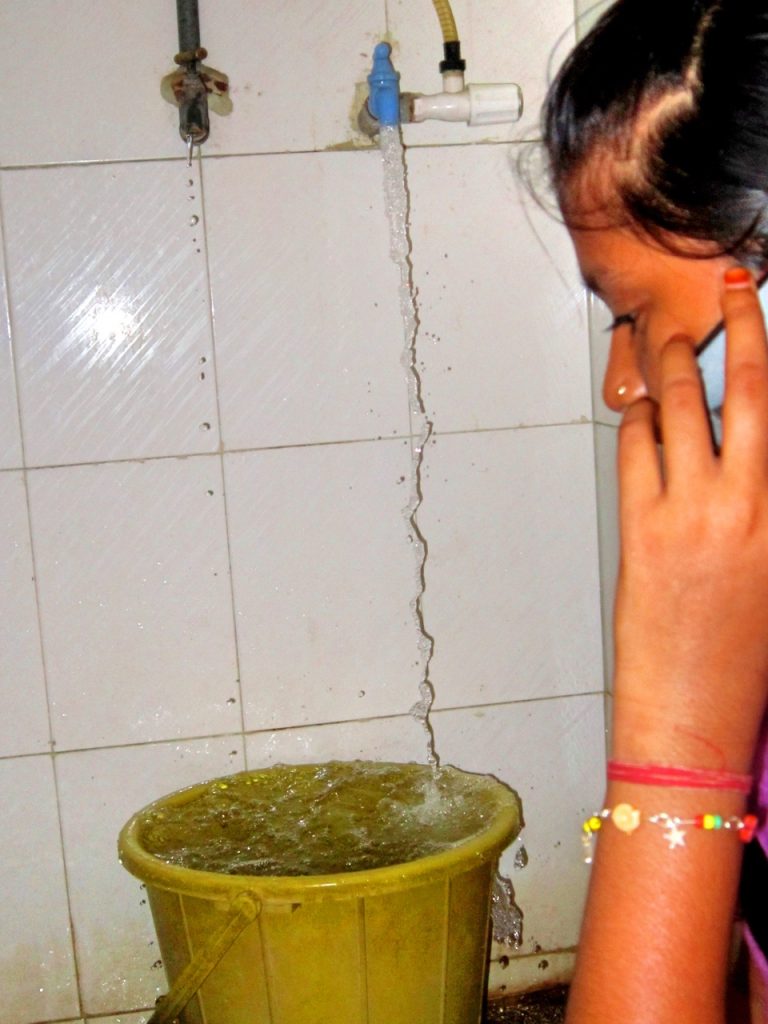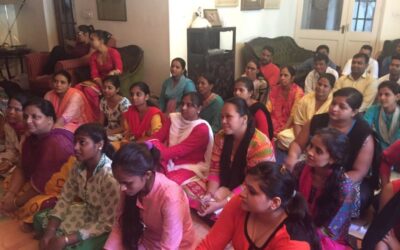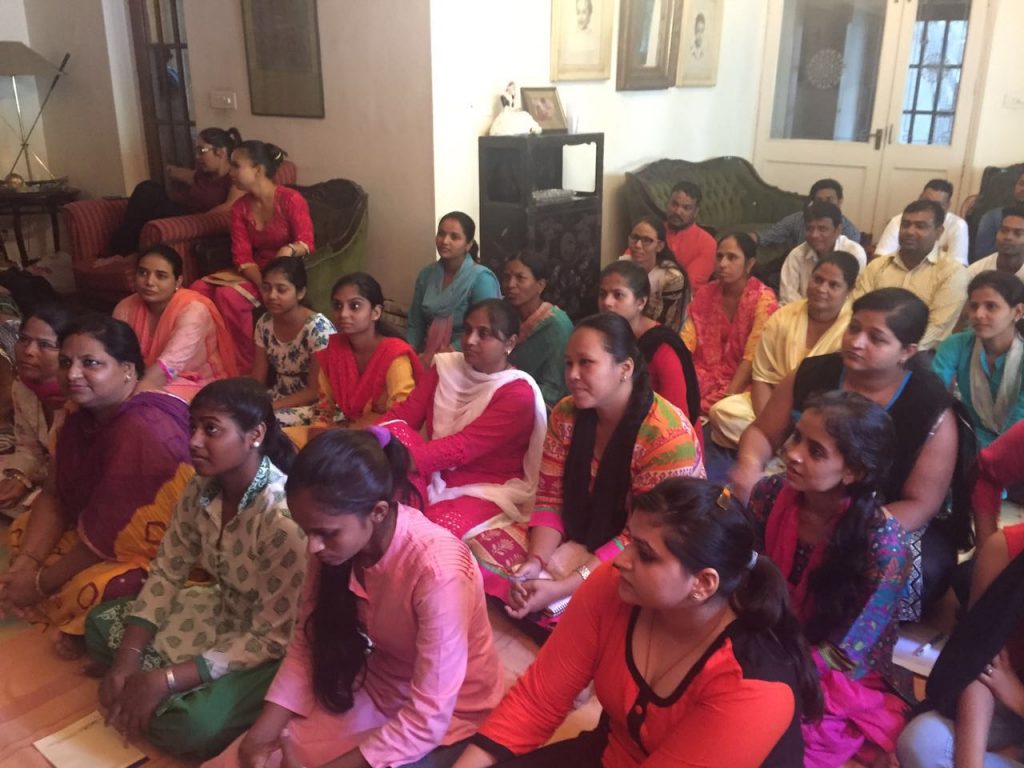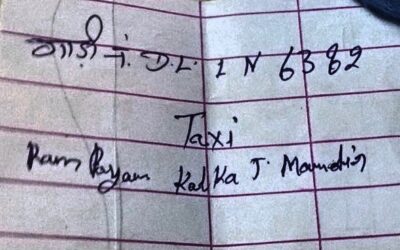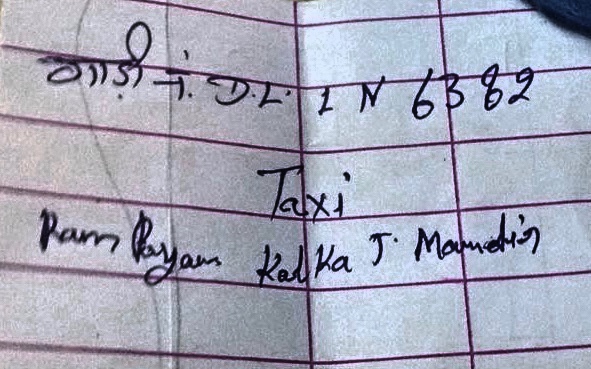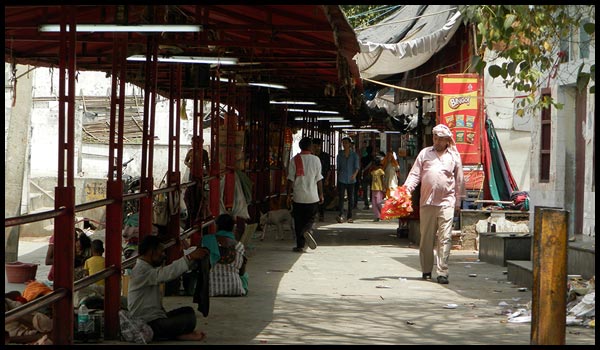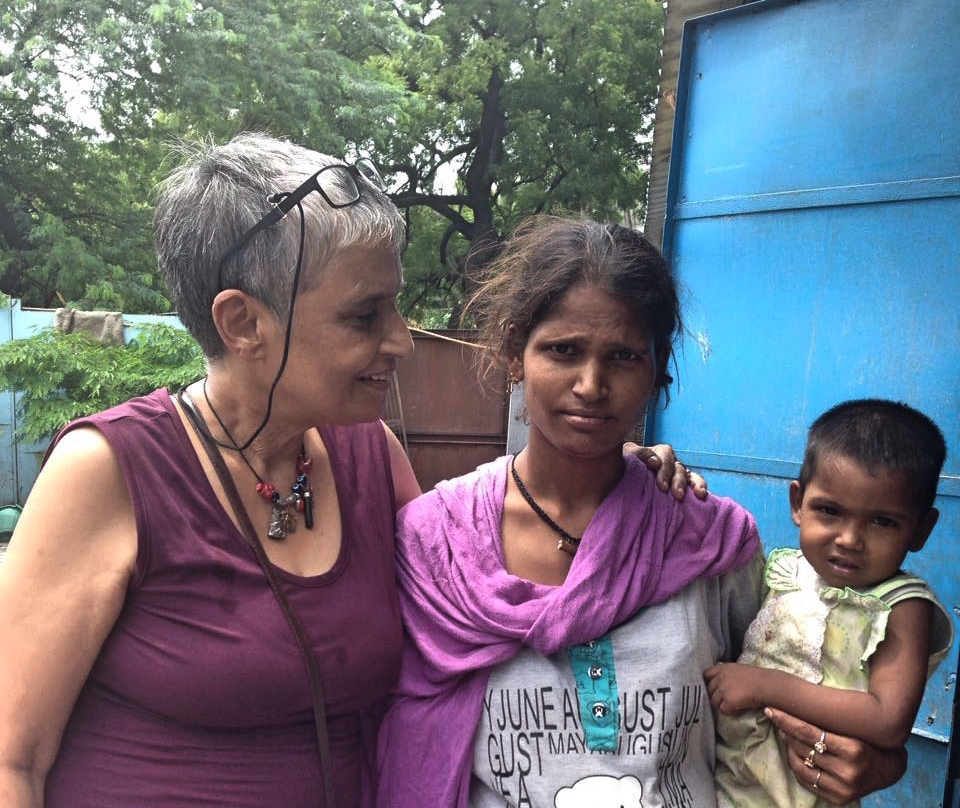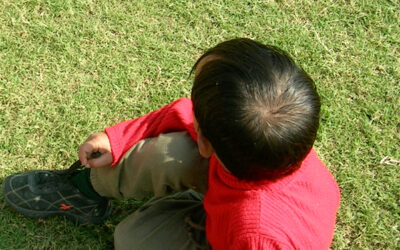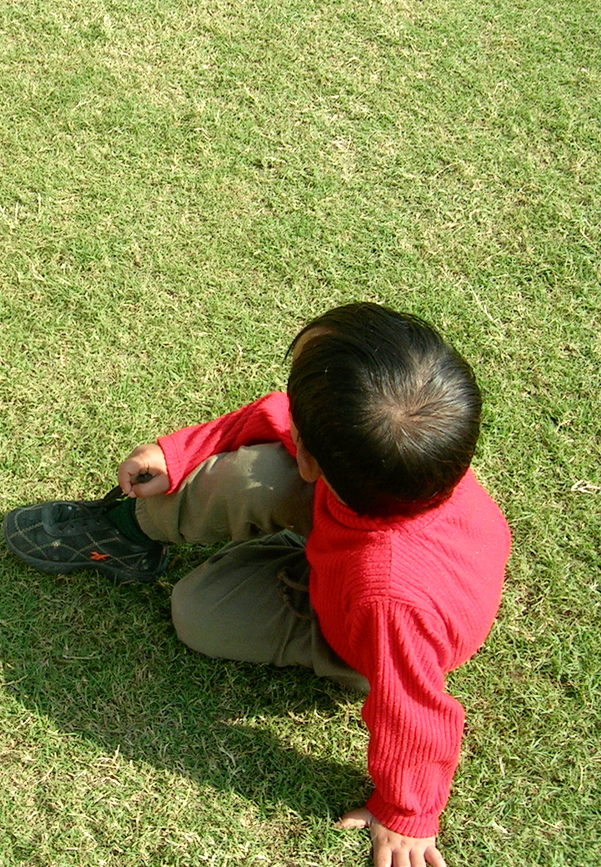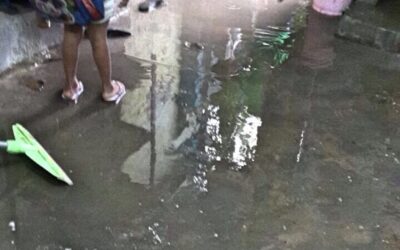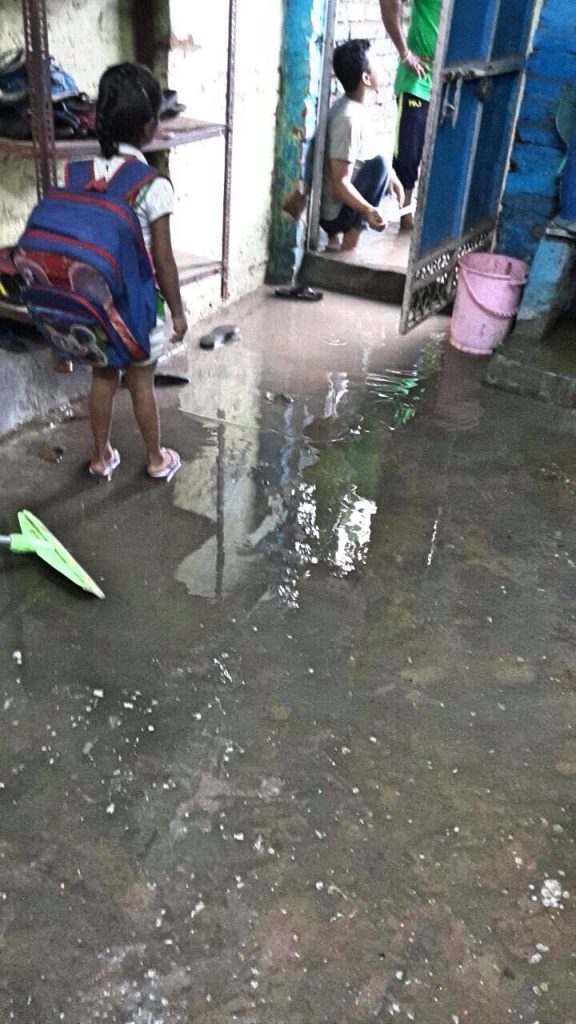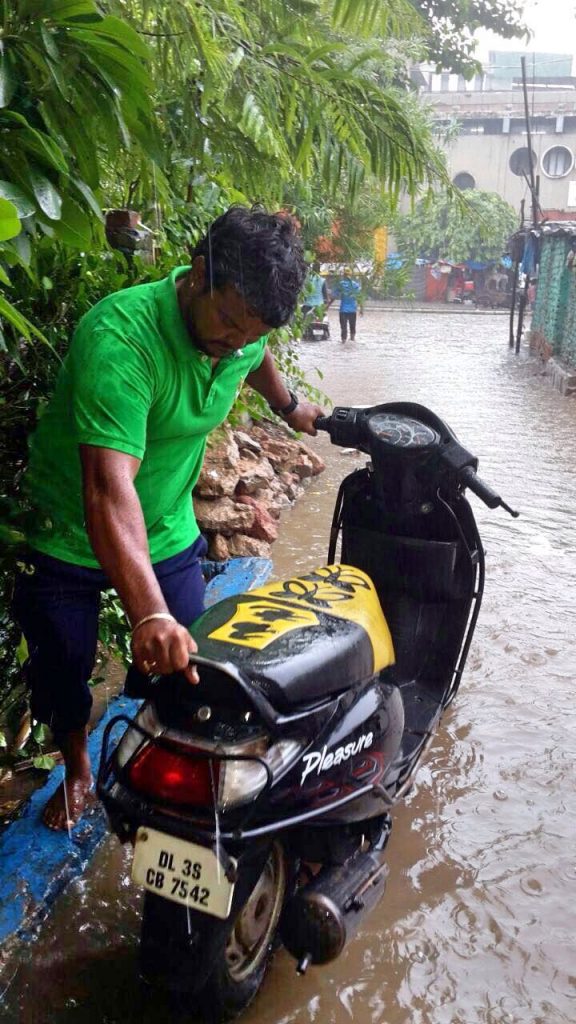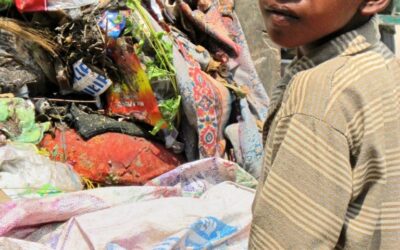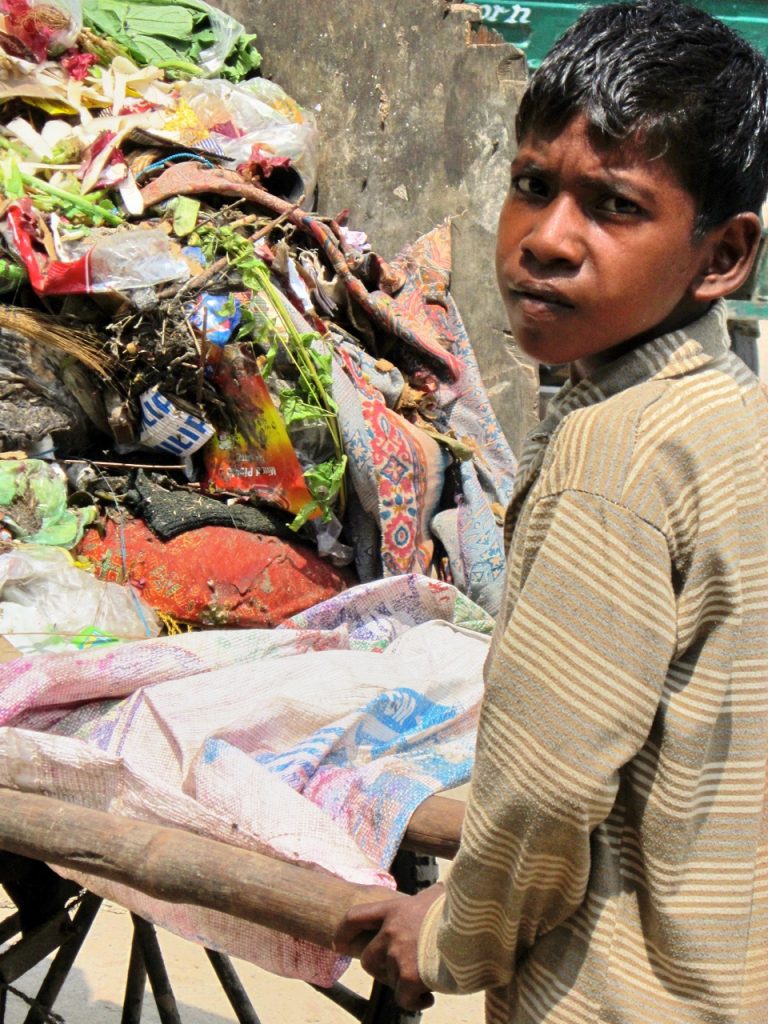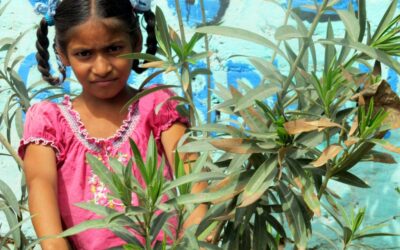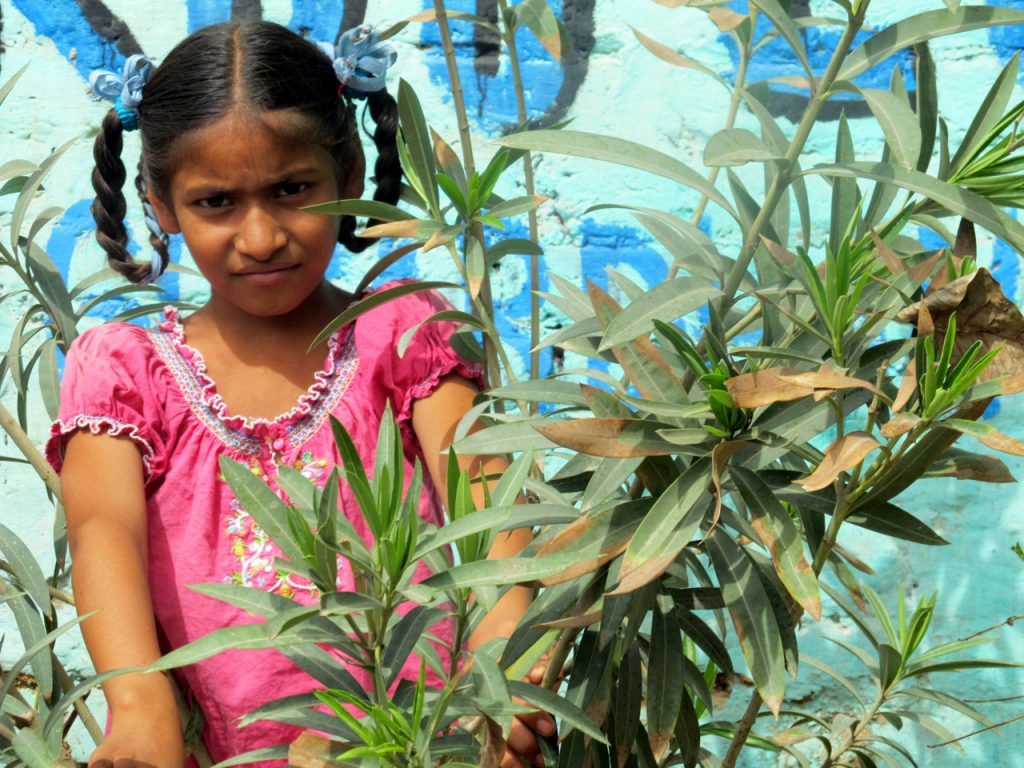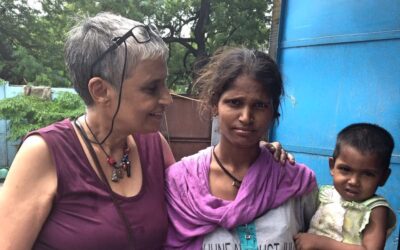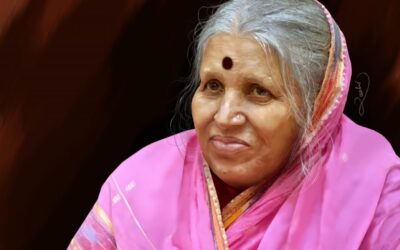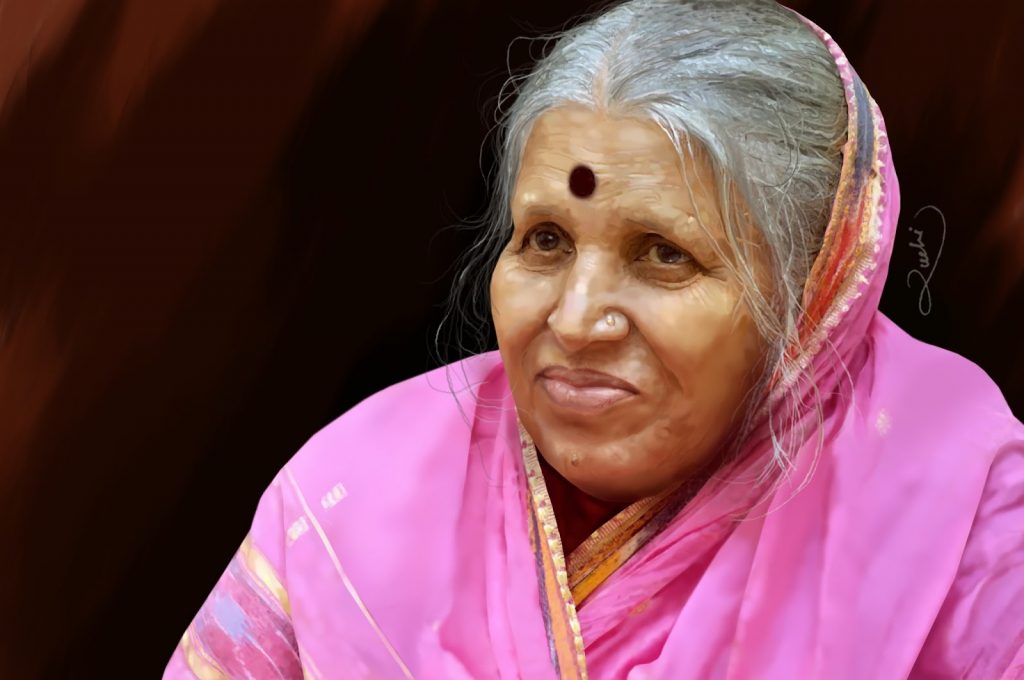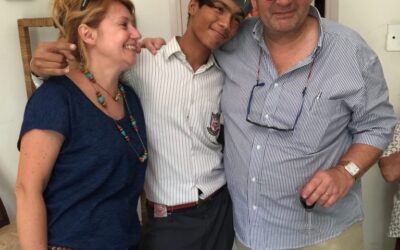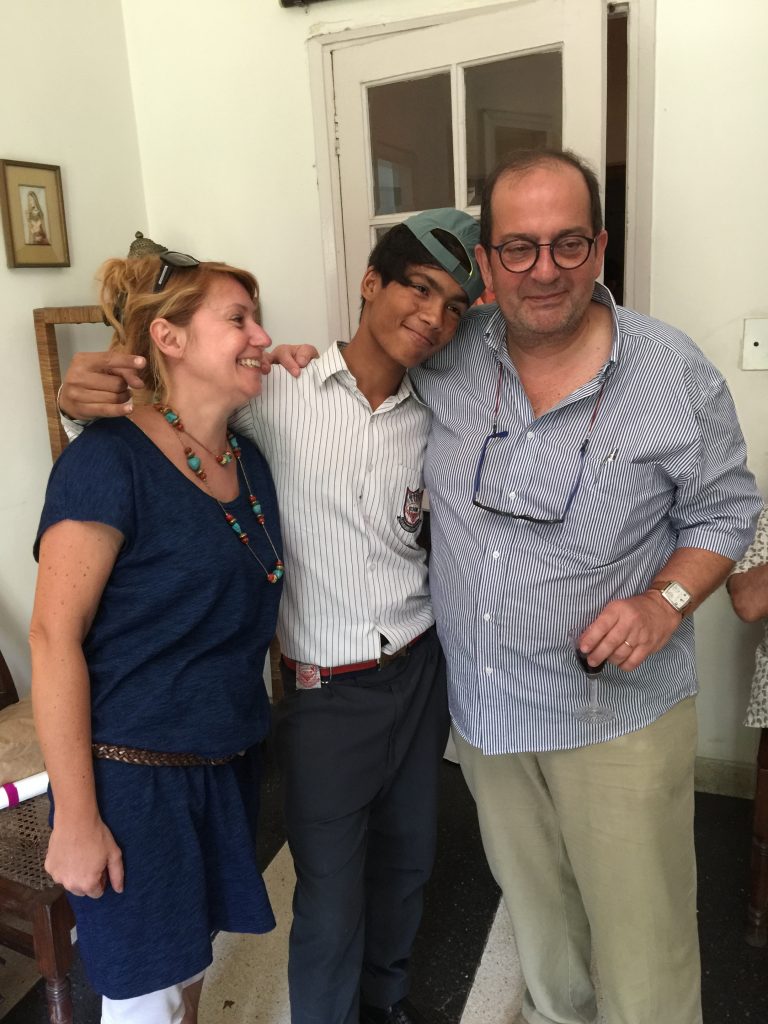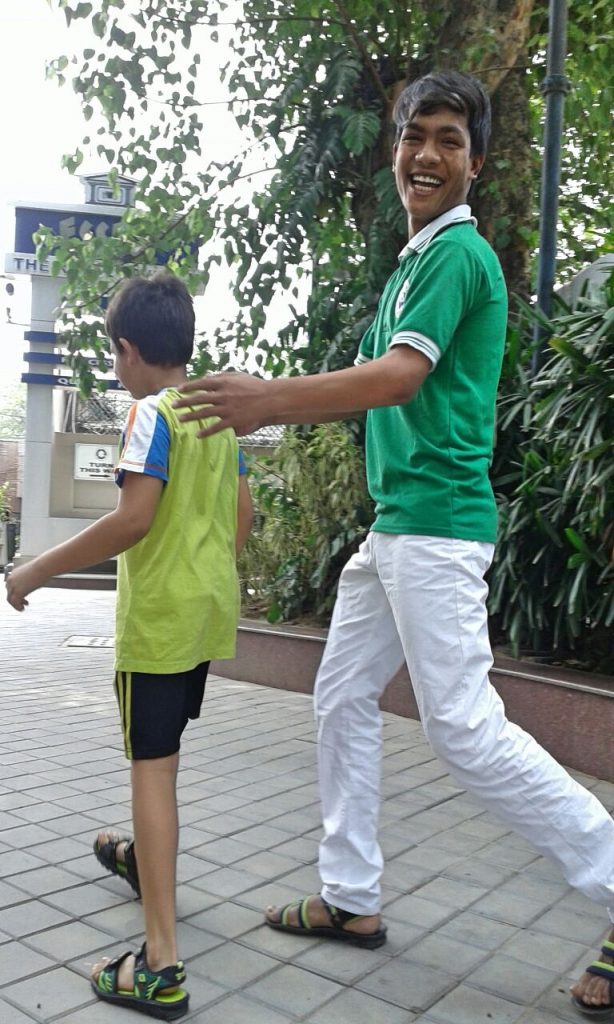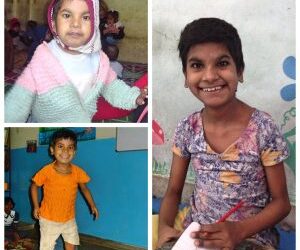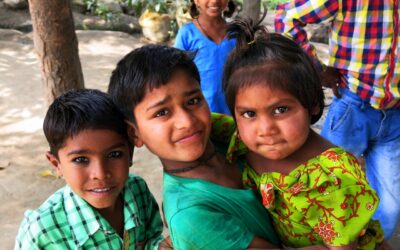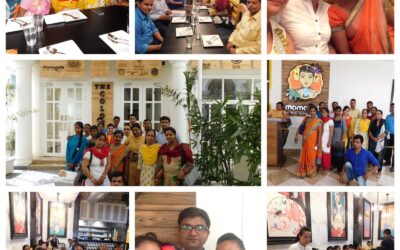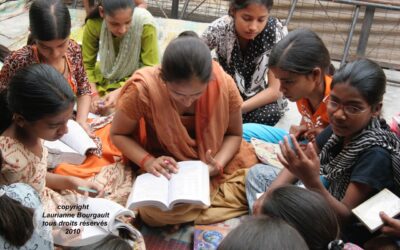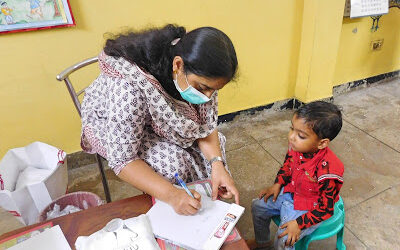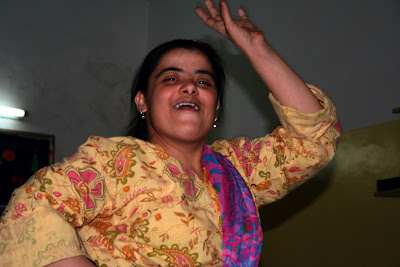The PT exam question #GivingTuesday#India
PT as we all know or at least presume stands Physical Training and is a high school ‘subject’ in India. It would be reasonable to again presume that it means playing games, training for individual and team sports etc. Not quite so in the Chacha Nehru Hindi High School, Bhiwandi. There you also have written exams! In the annual exam for class IX this year, the students were gobsmacked when the came across one the questions: Who is Virat Kohli’s girlfriend? For the uninitiated he is India’s Cricket team Captain. This was a multiple choice question and three known actresses were the choices given.
Does one laugh or cry?
This was a question out the prescribed syllabus. If one peruses the NCERT syllabus for the said subject, one learns that its aim is to : provide the required theoretical and practical inputs in order to provide an integrated
and holistic understanding and developing positive attitudes, values, skills and behaviour related to health and physical education at the primary, secondary and senior secondary levels.
A somewhat obscure definition but still one wonders how the knowledge of who is the current love interest of a cricket star does not meet the guidelines in any which way.
So one wonders why the question was included by the teacher who set the paper. Was is just for fun and popularity to be the ‘cool’ teacher? But what about those who have no interest in cricket and even less in the love life of the players. The question are endless but none seems to be satisfactory and acceptable. Parents are worried that their kids may have not known the answer as it was ‘out of syllabus’?
It is true that cricket is a passion and that many young people are totally aware of facts and trivia but not everyone. In a country were education is primarily by rote, even the brightest student may not have known the answer.
But it does not end there. Many deeper questions come to mind. The first one is about the seriousness and competence of the teacher. If one were to play the Devil’s Advocate one could say that the teacher was trying to test the student’s interest in other matters: did s/he read the newspaper, watch the news etc. But this does no stand ground as everyone knows that in the present system even half a point can make the difference between college or no college and hence you do not play around with the syllabus in an exam question paper.
This is indeed a very small matter but it does once again shed light on the critical importance of the need of an complete overhaul of our education and marking system, so that children can be freed from the stranglehold of impossible marks.
Project Why is very conscious of this anomaly and strives to take education outside books and walls.
Another form of gender bias #GivingTuesday#India
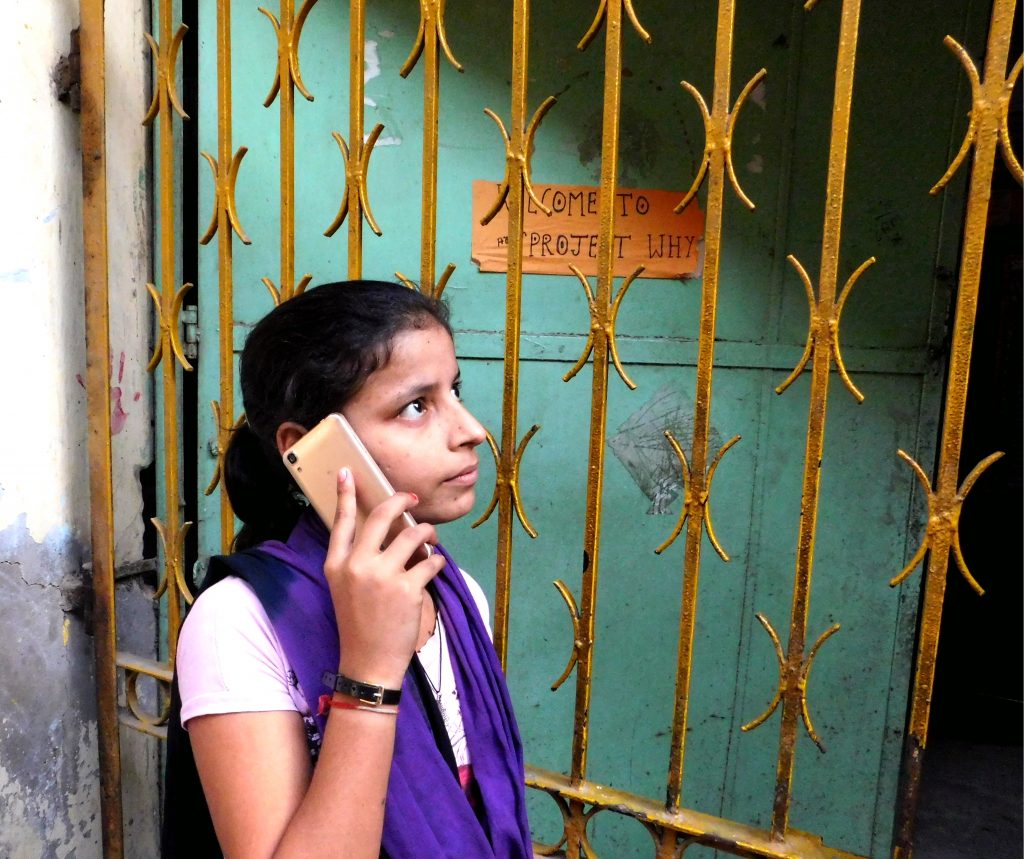 An interesting article appeared in the Wall Street Journal recently. It is entitled: Why the Vast Majority of Women in India Will Never Own a Smartphone. The emerging new middle class will purchase all sorts of things ranging from washing machines to even air conditioners but would not buy a smart phoneA for their daughters. The fear is a love marriage, something unacceptable to many families. Patriarchy supersedes technology.
An interesting article appeared in the Wall Street Journal recently. It is entitled: Why the Vast Majority of Women in India Will Never Own a Smartphone. The emerging new middle class will purchase all sorts of things ranging from washing machines to even air conditioners but would not buy a smart phoneA for their daughters. The fear is a love marriage, something unacceptable to many families. Patriarchy supersedes technology.
Statistics are glaring: 114 million more men own cellphones than women. Once again women are denied the benefit of one of the greatest technological leap of our times. Smartphones are not just love machines; they have become an essential tool in our day and age and more than that are a great social leveller. They can help learn, increase skills, communicate better and above all increase their safety when they are out of the homes. But the fear is so deep seated that in rural areas village councils bar unmarried girls from possessing a cellphone.
The whole matter lies on the skewed view of placing the family’s honour on the tender shoulders of the girl child. An aberration!
Even those meant to protect us are quick to blame the woman for crimes like rape and even the ubiquitous cellphone as was the case a few years ago. when a police officer said: western culture, mobile phones and lack of entertainment as reasons for rape. Still trying to decipher the meaning of these words.
The question that begs to be asked is why is no one willing to address the cause and take measures to eradicate it. The bandaid solutions that are too often proffered are always steeped in gender bias. It takes two to tango, but in these cases only one is reprimanded.
From the day she is born, the girl child is treated differently at every step. She has one reason to celebrate at least she is not one that was killed in the womb as is sometimes the case. From the day she is born her life is decided by the men of the families she will ‘belong’ to: father, brother, husband and in her twilight years son and so are her choices.
Today it is the smartphone. God knows what it will be tomorrow.
In 2005 a letter was written to a girl who died in the in the womb. It ended wit these words:
Who are you: a statistic in the records of the hospital, a pain in the heart of many that will slowly fade away, a regret, a topic of discussions with its share of ‘ifs’ and ‘buts’… I do not know..
To me you are the little girl who refused to be born in a world that she felt was not worthy of her… a child who took her one and only independent decision..
And we abide by it…
The seven vegetable pizza #GivingTuesday#India
Way back in December 2007 we celebrated Xmas at the women centre. One of our resident at the women shelter was Christian and she told us about the cakes her mom made and we ordered many for the party. Sophie one of our volunteers wanted a full scale celebration so there was a Xmas tree and all other decorations as well as pictures of Santa and gifts of course.
The children however were not Christians but mostly Muslims with a scattering of Hindus and it was left to me to make the link that would make sense to the kids. The kids got it as they always do: treats! Ladoos on Hindu days, vermicelli pudding on Muslim day and cakes at Xmas. As simple as that.
Festivals are about food.
Recently I was shown another side of the religious food story courtesy a wonderful volunteer of Indian origin who has always lived away from this land but whose family has followed traditions by simply adapting them. In their community you eat seven vegetables on Diwali. The hitch is that no one really likes a vegetable curry. What do you do? You take your kids’ favourite food and adapt it: enter the seven vegetable pizza, the family’s answer to traditions.
To me it was more than a ‘story’ that brings a huge smile to one’s face. This pizza held the true essence of the Hinduism I was brought up in and which embraces all and adapts to any situation.
Maybe we will have a seven vegetable pizza for Diwali this year!
Thank you Viren!
What Bob Dylan meant to our generation #ThrowbackThursday
The news of Bob Dylan getting the Nobel Prize for Literature was one of the best news coming my way in a long time. For those of us who were young and impressionable in the sixties Bob Dylan was an intrinsic part of our lives.
I write this slightly personal note today as I want young people to know how deeply we were influenced by song and poetry and how important it was to us. Let us call it serendipity, but a few hours before I heard the news I was telling a young man how ‘dating’ in our time meant sitting in a park reading poetry or singing Dylan songs. In those days music was heard on turntables and the more you liked a record, the more scratched it became but who cared. Those vinyls in their soon tattered covers were our prize possessions.
Dylan was more than a song to listen. His poignant and hard hitting words use to lead to heated debates that moulded our pliable minds and the adults we became were definitely influenced by this incredible poet.
What is amazing though is that hearing his words today, half a century later are still as meaningful as they were then.
In those days we believed we could remake the world into a happy and peaceful and it was the age of the flower children and the hippies on a soul journey. That did not happen.
Today the world is the antithesis of what we had dreamt. And never before have Dylan’s words rung more true.
Yes, and how many times must a man look up
Before he can see the sky?
Yes, and how many ears must one man have
Before he can hear people cry?
Yes, and how many deaths will it take ’till he knows
That too many people have died?
The answer, my friend, is blowin’ in the wind
The answer is blowin’ in the wind
Bob Dylan 1963
Warriors of Air #GivingTuesday#India
Don’t go by the picture! These kids are the luckiest as they live on the bank of the river in the middle of green vegetable patches and breathe good clean air, or at least the best available in our capital city.
For the others the invisible bars of polluted air are slowly appearing and will soon incarcerate us all for the months to come.
You guessed right! Air pollution is on its way. WHO has just confirmed that Delhi’s air is the worst of all megacities. Fine particulate matter is already four times more than what is acceptable.
That the situation is critical is obvious but to put matter in perspective here is a fact: India’s capital was the only megacity to record a PM10 level above 200 µg/m³, exceeding the WHO air quality standard of 20 µg/m³ by more than 900 per cent.
The monsoons have gone and with it blue sky and breathable air. For the past few days a grey lid covers the city and no, its is not rain clouds. In some areas farmers have begun to set harvested fields on fire, construction sites are thriving and in a few days festive celebrations will begin and firecrackers will burst with impunity. And then as winter comes small fires will be lit to keep warm, more fields will be set on fire, cars will rev in the traffic and the smoke of industrial chimneys will add to the toxic cocktail. And we will be breathing this air as we have no choice.
Or do we?
We all know that the air is polluted, that water is scarce and so on but how many of us take any remedial measures. The rich will buy air purifiers and soon the poor will too as prices are coming done. Market forces!
Is it not time to stop looking for bad aid solutions and do something for mother Nature.
Easier said than done as the fight is somewhat skewed. Talk of firecrackers and it is all brought down to mores and tradition, and what about the fire to warm yourself. When you live on the street then that is the only way you can beat the biting cold. For farmers it is easier to set fire on the land than painstakingly pullout old roots.
Air pollution has dangerous effects on humans, animals and plants. It leads to heart and lung disease, global warming, acid rain and more. Children are the most affected. Children from urban slums suffer the most as they rarely take a break and get to breathe clean air.
The problem with the solutions are that they require life style changes that many are not willing to adopt: take the bus or the metro instead of your car, switch off lights and appliances you are not using.
Some measures are impossible because of no availability of safe infrastructure. One would love to walk but where are the pedestrian walks, one could cycle to work but where are the cycle tracks. It is said that if water is sprayed regularly on roads and construction sites there would be a change in the air quality, but this again is Catch 22 itself as water is scarce and precious.
Most of these solutions are not in our hand as they involve government and administration.
At Project Why we believe that the first thing is to make children aware of the critical situation that exists and then inform them about the ways to curb air pollution so that even if they cannot do things they can become Warriors of Air.
Some of the steps they can participate in are: segregation of garbage. asking their families not to take motorbikes for short distance errands, learn to recycle and reuse, convert garbage into compost, switch off lights, etc.
Let us not forget that it is children who suffer the most. 4.4 million children in Delhi already have irreversible lung damage. So if not for us we have to think of the children and their tomorrow.
It is only when we ALL accept to become Warriors of Air that things will change.
Learning to…#GivingTuesday#India
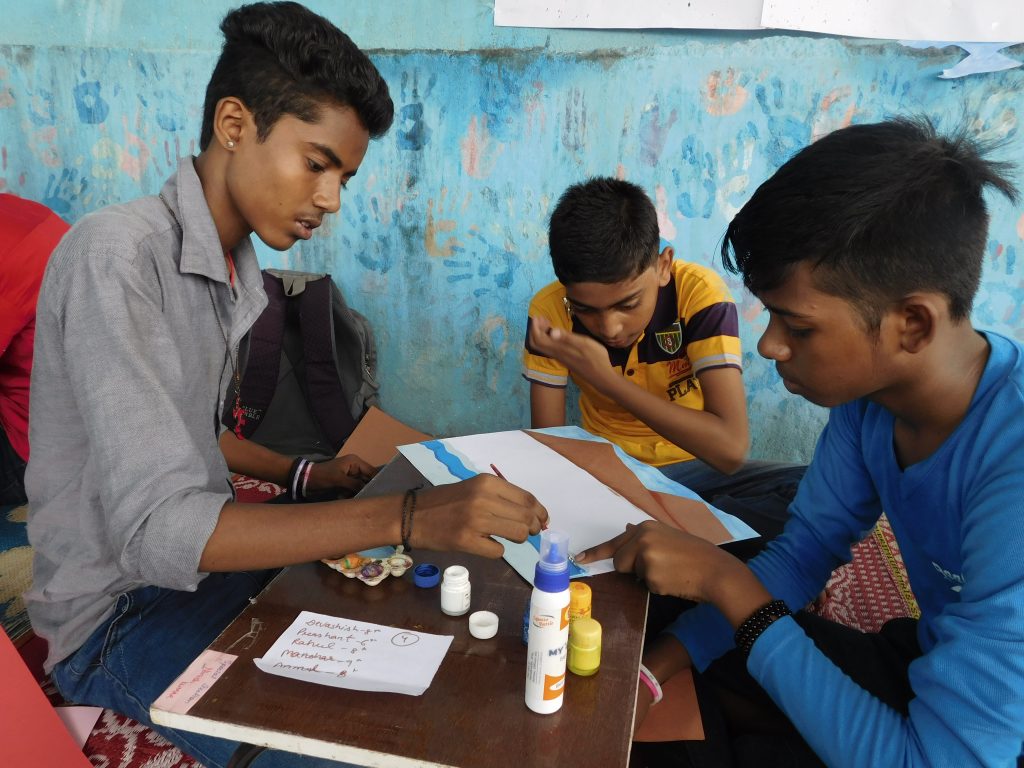 Two weeks ago, two class XII students murdered their teacher. The reason: he expelled one of them for poor attendance. Rage, anger, frustration? Nothing can condone violence of this kind and the boys will face the law.
Two weeks ago, two class XII students murdered their teacher. The reason: he expelled one of them for poor attendance. Rage, anger, frustration? Nothing can condone violence of this kind and the boys will face the law.
The question that begs to be asked, though few will, is: who is responsible for this brutality and the answer may not be as easy as one would like to believe.
This extreme action should compel us to look at reality in the face. The two boys were school going and had studied hard enough to reach class XII. They were not one of the (ill)famed dropouts.
That any child would resort to such abhorrent violence must lead us to look at the present education system and social environment our young live in particularly in urban slums. This post is not meant to justify the act but prevent it in days to come as violence and aggression are an intrinsic part of the DNA of underprivileged children.
Education is undoubtedly the one tool that shapes mind and thus life. School should be an enabling environment where every child blooms according to her or his capabilities and talent. Education goes far beyond three Rs.
At Project Why we have always believed in Jacques Delors definition of education, namely his four pillars of learning: learning to learn, to do, to be and to live with others. Sadly education as we know it stops at the first.
One of the reasons of setting up Project Why was to address a unnatural reality: the half day school system whereby boys go to school post lunch. The school is for girls in the morning. Boys are left to their own device as their homes are tiny and so the street becomes their realm. With no quality parental control they are left to themselves. Bunking school becomes easy and as they grow the transformation between child and bad element is bound to happen. What we forget is that we are a part of the terrible mutation.
That they should be aggressive and even violent is again to be expected. Child physical abuse is rampant in both homes and school and becomes the only tool they know. No one talks to them or asks them their point of view. Communication is one-way from adult to child and they have no voice. So where do they learn to be and live with others.
We once asked a group of secondary students who were regularly beaten in their school what was the one thing they would change if given a chance and ALL of us would have bet our bottom dollar that the answer would be physical abuse. We were astounded when they told us that they would give the child a chance to explain himself before beating him. Beating was par to the course. What they wanted his a voice.
Children need to be heard. Children need to be recognised as individuals. Children need to be respected. Their talents need to be discovered and honed. They need to be given means to vent their anger and emotions. If the two boys who now will spend years in a brutal jail had been taught better then three lives would have been saved.
It is time we took responsibility and acted. Education reforms are needed but again they have to be the right ones, the kind that helps every child to grow to her or his full potential.
All television is educational television. The question is: what is it teaching? #GivingTuesday#India
All television is educational television. The question is: what is it teaching? wrote Nicholas Johnson.
Television is the most ubiquitous object as it breaks all social barriers and finds its way in every nook and corner of the land. Satellite dishes dot the most unlikely roof tops from crowded slums to the thatch homes of the agricultural labour tending to vegetable fields.
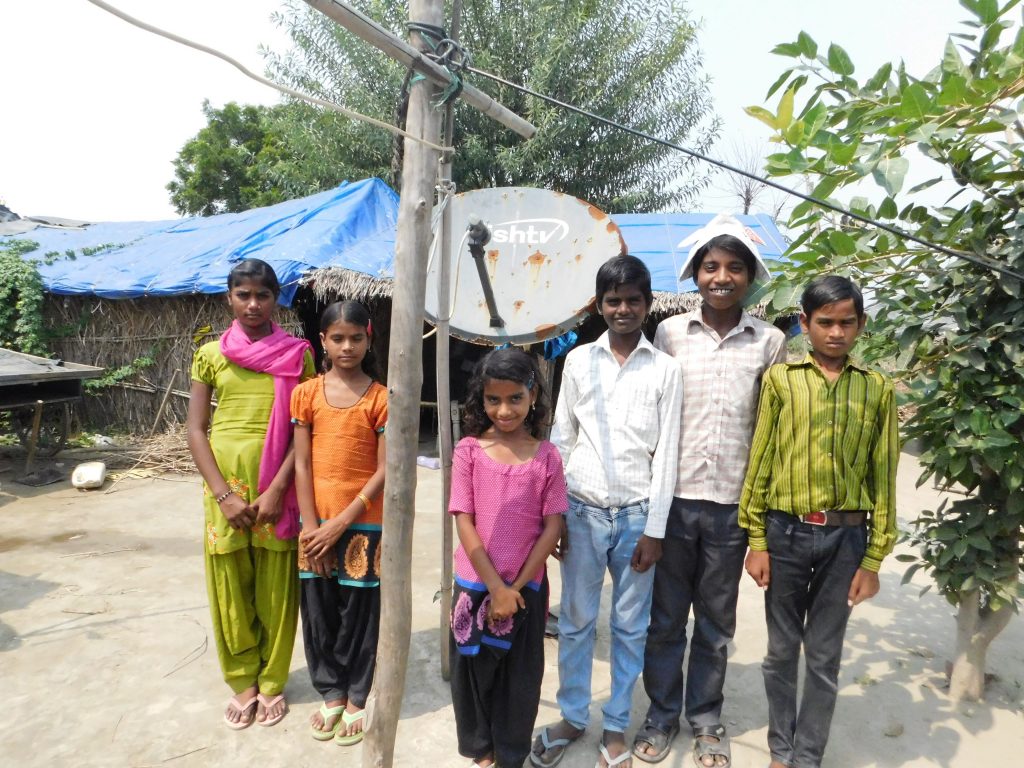
No matter how poor you are, TV is always something you will find money for. Nicholas Johnson is right in saying that all TV is educational but then what does it teach today?
In the times of 24 hours and innumerable channels there is a lot on offer. In tiny homes with a sole TV there is not much scope for parental or any kind of control. The preferred programmes are undoubtedly the plethora of soap operas that seem to have taken the place of the weekly movie outing that was once affordable. Today the big cinema halls with different ticket rates have been replaced by multiplexes where you pay the same for front or back row.
In yore years the back row was for the dating couples and the front row for what was know as the whistling viewers. Post movie day there was a week of processing what you had seen. And in yore years again Bollywood movies did have a social message. Gone are the days of tear jerkers!
Soap operas are family dramas that are a far cry from the reality of those who view them in slums. Nothing resembles the harsh reality of survival. They do provide a much needed escape but where escape is good once in a while, it can be nefarious when resorted to constantly.
Then there are cartoons that are often seen by children after much negotiation and even violent arguments. Some are innocuous but others can be violent.
There are movie channels, reality shows, music channels and even educational channels. Common to each is the clever interspersion of ads. No wonder that you find the most upmarket products in the poorest of homes as these are available in affordable pouches.
Many young slum kids learn their dancing and dress sense from the box. Not a bad thing some would say.
But too much of anything can be dangerous and when there is no control of any kind danger lurks in every image.
At Project Why we try and put things in perspective. The only means to do so is to give every child that comes to us the freedom to share her/his thoughts and desires with us allowing us to help her process it rationally. It is all about open communication.
TV or for that matter any information source is educational provided it is backed by processing and understanding.
Requiem for an invisible child #GivingTuesday#India
You may be wondering why the illustration for this post is an ultrasound plate. The reason is that there exists no picture of the child whose story we tell.
Little Sonny was born a month or so ago to a beggar woman of the Kalka Temple. This was the mother’s 4th child, the eldest way in her late teens. Two of her children are special needs children and the husband passed away before Sonny was born. When the baby arrived and it was a boy, the mother was elated.
However one look at the child was enough to realise that the baby was born with Down Syndrome. No one had the heart to tell the mother. Would she have believed this? Perhaps not as Sonny was the ray of sunshine she held on to.
A few weeks later Sonny passed away. The reason given was an insect bite at night. He had gone to sleep alive and woke up dead. Maybe it was all for the best as a child like him had a very bleak future.
Had he been from a well-to-do family that a scan like the one above may have resulted in his being aborted.
He could also have been born in a caring family that would have done everything possible to make his life the best or to a family where he would have been shunned. But that was not the case.
Sonny is one of children born in India but never claimed by the land. They remain wandering souls that have fallen off the net and when they pass they often fade from the memories of those who gave them life as they are too busy in simply surviving.
Late by 50 years #GivingTuesday#India
A recent UNESCO report states that India could be late by half a century in achieving its global education commitments. It would need to make fundamental changes in the education policy if it were to meet the 2030 goals. At present India is expected to achieve universal primary education in 2050, universal lower secondary education in 2060 and universal upper secondary education in 2085.
That education is the one and only road to transformation is indubitable. Education helps break the poverty cycle and hence should be given centre stage. But that is not the case; hence the delays un meeting the millennium goals.
If we are to go with the stated report then it will take another 34 years for ALL children in India to acceded to primary education.
Let us leave statistics alone and look at the human factor. What this means is that for many millions of children today primary education remains a dream. The reasons are many. From poorly run schools, to lack of teachers, to lack of motivation, to gender bias, to access to schools, to inclusiveness, to poverty etc. Each of this is redressable.
But time is a crucial factor and time is something that children do not have. They grow every minute and before even planning can be done, they have missed the coach.
It is imperative that immediate solutions are found and implemented.
One such solution is Project Why.
Education does not simply mean enrolment in a school. Only if the education is of quality will it help transform a life. In todays education scenario going to school alone does not suffice. What has come to be know as ‘shadow education’ – after school tuition, coaching, extra classes – is a essential to success. This comes at a price the poor cannot pay. This is further compounded by the fact that poor children often have illiterate parents who cannot provide any support.
It is over 1000 children that Project Why helps at no cost for the past 16 years. The fact that the problem is not only real but calamitous is amply demonstrated by the large number of children who have come to Project Why after 3, 4, 5 and even more years of sitting on a school bench and who could barely read or write. Such children drop out often by the end of primary school or when they face their first real exam.
The flip side is that the same child who would have dropped out and been considered a failure needs only a little help to make up for lost years and reach the top of her class. We have many such children. That is what makes the situation so tragic.
Project Why is a minuscule effort but one that bears fruits. At least for these 1000 children education is a reality.
Dirty water stunts million of children #GivingTuesday
India has the largest number of stunted children in the world reveals a recent study. For Project Why that is one too many! The main reasons are: lack of toilets, dirty water and poor hygiene. In urban slums and even lower middle class colonies that is a reality. Narrow lanes, unchecked construction and overcrowding spell disaster. Even in the area where Project Why’s main office is located and where property is in 7 or even 8 figures, clean and drain water pipes get mixed and a foul smelling grey water runs in your taps. The reason being unchecked construction where pipes are dug ad infinitum by unskilled workers.
In slums where piped water does not exist, drinking water is collected in recipients of all kind from taps or water trucks. Then it is stored often in unhygienic condition and used for the next 24 hours.
Toilets are scarce. Those that exist are filthy. A brave Project Why teacher undertook the survey of local public toilets and was sick for two days. They were beyond filthy. The problem often was lack of water and budgets for cleaning.
It all comes down to planning.
What no one realised is that the dirty water is drunk by children below 2 who get stunted for life. The damage is irreversible. These children grow to be physically and intellectually weaker than their peers. Some do not make it to age 2 as they succumb to one of the many waterborne diseases. Death is rarer in cities where medical facilities are available but a stunted child is marked forever. Children cannot wait for long term solutions.
The way out is to educate people about the importance of water, about storing it in hygienic conditions, about washing hands before diving in the drinking water pot and about not wasting a drop.
At Project Why we do that relentlessly. Saturday is hand washing day. Regular competitions on water related themes help the children com up with solutions. Project Why even held a photo workshop where the theme was respect and one of the sub topics was RESPECT WATER. Here are some of the pictures taken by the children.
The workshop helped children experience reality and we hope they will carry the message forward.
It happens only at Project Why #GivingTuesday#India
When a friend offered to run a healing workshop for Project Why staff so that they in turn could share it with the children we were a little hesitant. The reason being the multitude of faiths and beliefs followed by them. However we had faith in the sixteen years of sharing our views and beliefs and decided to go for it with the caveat of allowing individuals to opt out if they so wished.
Needless to say NO ONE opted out!
This experience, a first for Project Why, was most rewarding and made us wonder why we had not thought of it before. It was deeply empowering and helped everyone address situations and problems that were upsetting them. It also brought a feeling of peace, oneness and above all confidence. The staff enjoyed the experience and has promised to share it with their students.
It is a proud moment for Project Why and a validation of its efforts to bring people together and celebrate difference.
Hit and Run #GivingTuesday#India
A young girl was victim of the ubiquitous hit and run syndrome that is a familiar occurrence in cities. Most get reported. Some make front page if a ‘celebrity’ or ‘privileged’ is driving a ‘swanky’ car!
There are some hit and run cases that never make any page. Most often only those close to the victim are the sole witnesses of the ghastly act. Last week a young girl was hit by a car as she crossed the road after finishing class. She was a student of the pilot project run by Project Why for the children of beggars at the Kalkaji Temple. Little S was in many ways the one who by her sheer tenacity compelled us to begin classes. She is alive but her leg has been crushed badly. She is in hospital and has been operated upon.
Her mother A delivered a child just six days before the accident happened yet she was the one who had to ferry the child in an auto to the trauma centre. The only ‘proof’ of the accident is the car number hurriedly copied by a kind stall owner. A is also the one who has been banging on the doors of justice but has not been heard. The police are not interested in a young beggar child and her beggar family. The father remains at the little girl’s side keeping silent vigil. The mother looks after the newborn and the other children and before any brow lifts in despair, A had her tubes tied at a camp. The baby came after the surgery.
At present A lives in the women shelter where she delivered the baby. Habitually the family lives on the ‘street’. Most beggars sleep where they beg.
If you look at the picture above carefully you will see bags and bundles. These are the packed up homes of the very beggars you see. After working hours, they set up house. If you were to pass by early morning you would see them brushing their teeth and sending kids off to school.
This is A and S’s home. This is where S would come back to recover from surgery. Most probably she will be taken to the women’s night shelter but then kept away from her father, the one who sat with her throughout the hospital ordeal. When will she be able to return to school is a question we all ask. We will fight day and night to ensure she returns to school as early as possible.
Come to think of it, in the given circumstances, a maimed child is likely to earn more ‘begging’. And is it not the ‘family’ business; so all within the new child labour laws.
S is just one of umpteen children who beg. In some cases like Arati’s or many of the women in the night shelter, they did not chose to beg but were driven to it by a series of unfortunate circumstances. In some cases they lost their homes as metro stations or malls needed space. Not having all the documents required they were not ‘eligible’ for any alternative scheme so found whatever alternative they could and began their descent to hell. Begging was the last resort. In some cases women are abandoned by husbands and left to seek shelter and beg for survival. That was the story of many of the women in the shelter some having just had babies. They eat at the numerous religious feedings. On days when there is no free food, they beg just enough to buy a meal. Their future seems hopeless.
And yet amidst all this squalor you meet R. R is an imposing and confident woman who is ‘in charge’ of the women’s shelter. She is literate and runs a small tea stall just outside the shelter. She recounts how she too was a beggar many years ago and would have remained one had she not been helped by an organisation that sent her to a residential school where she got educated. She came back and married another vendor and has one son she is determined to educate. She has never looked back.
Listening to her story gives hope, hope for these children who study for a few hours with us. Maybe some of them will follow R’s steps.
We at Project Why will walk the extra mile to ensure that.
S was the victim of a hit and run. We do hope to trace the driver and ensure that the family is helped.
This is Arati with one of her kids!
Why not for education… #GivingTuesday#India
Government to enlist gurus for organ donation campaign is a recent headline. The article goes on to say: “The health ministry plans to rope in spiritual gurus to help dispel myths about organ donation“.
This is undoubtedly a good move. Organ donation is a noble cause but so are education, child marriage, gender equality, child abuse and far too many more.
One often wonders why spiritual leaders of all faiths do not raise social issues as theirs is a voice that is always heard. In today’s disturbed world they hold the power to change things.
This is a statement made with responsibility as it is based on experience. Over the years we at Project Why have witnessed time and again the power of religious percepts. Nothing takes precedence over the rituals and religious traditions not even the child’s medical need let alone the school fee.
The importance of religious customs is deeply embedded in the lives of slum dwellers who spend enormous amount of money on ensuring that every one is respected even if money has to be borrowed at mind boggling rates.
In villages in Bihar it is, we are told, customary to ‘feed’ the whole village for three days after the demise of a close relative. We were horrified to learn that a parent who had barely enough money to survive had put up a feeding stall in the slum cluster and was ‘feeding’ everyone. Needless to say he had taken huge loans. When asked later why did he do this, he replied that it was a matter of honour and if he did not comply he would be ostracized.
Over the years we have rarely succeeded in getting people to alter deeply rooted traditions. All logic and even threat fails. So people give huge dowries, marry their girls early and so on. However if a religious leader said the same, things might be different.
At Project Why we hope that the support of such spiritual leaders will be sought for the social change that is paramount to a better world.
It simply does not know how to fall upwards #Giving Tuesday
The rains have created havoc in the city for the past days and yet nothing unpredictable as it is monsoon time and a good monsoon is what everyone hopes for. Vladimir Nabokov said: “Do not be angry with the rain; it simply does not know how to fall upwards.” And fall it does, transforming the world as we know it in a jiffy.
The picture above is our Okhla classroom. Sure the roof was temporarily patched and is holding, but water is seeping through the cracks in the wall and even from outside as here too the word ‘drainage’ is not part of any lexicon.
On rainy days children and staff spend most of the time clearing the water away as best they can. No one asks for a day off. What is needed is a a dry spot to lay out the mats and begin class.
This is but a tiny example of how just one heavy spell of rain can alter one’s day.
The reason is poor construction and absence of planning. Even the best of us forget to plan for the proverbial ‘rainy day’.
Last week’s rain saw the city come to a halt as roads got inundated and one could only wait for the water to recede.
But life goes on and people brave all odds to ensure that it does. Our kids live in homes that bear the brunt of the rain’s fury. Their homes being low lying means they get flooded. School uniforms do not dry and thus they miss school, not to speak of the soaked bedding that means sleeping on the hard floor. But it is all part of the game of life.
Do we ever give a thought of how many challenges are met by those we often take for granted to ensure that our lives do not get affected by the rains?
Do give a thought to those who make our life better, whether the lady who comes to help in our homes or the man who cleans our clogged drain or even the electrician who repairs the lights blown because of the rains.
As for Project Why teachers, they too brave all odds to come and teach the children.
The caveat that defeats the purpose #GivingTuesday #India
The Upper House of the India Parliament passed a Bill to Amend the Child Labour Act 1986. The amendment prohibits the engagement of children below the age of 14 in all occupations and processes so that they are able to enjoy their fundamental right to education. It should be a cause of celebration for the likes of us at Project Why. Child labour in any form is abhorrent and reprehensible.
The celebration is short lived when one sees the caveat that defeats the intent. Although it abolishes child labour in any form it introduces a proviso that allows children under 14 to work in family enterprises. Nothing alarming you would say keeping thinking of your own child and your family enterprise but this means that children can help families after and before school, our kids do help with home chores don’t they?
But what if your family business is rolling beedis or agarbattis, making bangles, packing and sticking labels or any of the umpteen of labour sub-contracted to families on a per piece basis. So the more you make the more you earn and hence the tiniest hands are usefully productive. Many parents of Project Why children engage in such work, the easiest to access.
Often children who ‘help’ in such work spend hours before or after school helping the families. In the early days of the Project Why’s Yamuna centre parents would happily come to class and ask for their child as (s)he was ‘needed’ to help pick vegetables. It took us some time to convince them to stop. Mercifully they have.
At that time we thought law was on our side but today it is not. True there is the before or after school but is making a child work acceptable, that is the question we must ask.
Attending school in itself is sufficient ‘work’ for any child. A child who has spent some hours rolling beedis or making bangles is already tired and will not be able to concentrate in school and hence will perform poorly. The time when (s)he drops out will not be far as the choice between work and school is a foregone decision.
This approach seems to imply that the best for a child is to carry on its family’s profession and maintain status quo.
But every child has a right to dream and dream BIG. That is what we believe at Project Why and strive to achieve.
The best example is our very own Sanjay who was born on the street to a family of gypsy ironmongers, who was a Project Why student, then teacher and then doors opened and he is now an International Ramp Model. That is because his family allowed him to get an education and work in another profession. Once the gates open, the sky is the limit so why shut the door on India’s children dreams.
Ribbons in her hair #GivingTuesday #India
Kid Speak is cute. There have been TV shows like “Kids Say the Darndest Things’” or books like “Children’s Letters to God” that always delight us and warm our hearts. But the kind of Kid Speak we share today is the one that puts a lump in your throat and leaves you feeling heart broken and helpless.
I have made friends with school going children who live in the open at the Kalka Temple. Their parents are beggars. At night the family rolls out their beds under a narrow tin awning and in the day the same is rolled away and placed on some ledge or other with all the family’s belongings including the precious school bag. When asked why he had not gone to school, a little boy replied, “mama had to take my sister to the doctor. She has asked me to look after the bedding and make sure it does not get wet if it rains.” It was indeed a very cloudy day.
I was further enlightened when another child who had not gone to school said, ”We do not go to school when it rains as our uniforms get wet and would not dry for the next day.” I came to know that most kids have just one set of uniforms and thus the need of it drying is critical.
When I asked a little boy if he wanted toys to play with I was told almost dismissively,”I only like to study!” Do these kids intuitively know that learning may make a difference in their lives?
When I enquired about a little girl who had a high fever I was told that she had gone to school. Before I could react another kid told me, ”You see, if she had stayed here she would have been running around; in school she will be able to rest.” Yet another lesson.
These children struggle to survive with whatever dignity they can muster. It is touching to see how a mother spends that little bit of extra time tying the ribbons in the hair of her daughter as she readies her for school on a open stretch of road or how she goes haring down to see who had brought in the tastiest offering so that the child can have a better breakfast (people bring food early mornings as offerings to the deity).
I was surprised to see a beggar woman sitting on a step with het two school going children and holding a copy book and a pencil. She was helping her kids with their homework. I asked her if she had been to school and she proudly answered, ”I have studied till class III!”.
One wonders what brought her to where she is now.
To many of us, beggars are the pesky children that knock at our car window at red lights. But that is not who they really are. They are all people with a story, a story that needs to be heard.To know more about ‘beggars’ do read this article: Oh, that pesky Beggar…why doesn’t the Police take him away?
We at Project Why are working on getting these children the extra education they need.
Hope you will join us!
To do or die #GivingTuesday #India
 |
She begged so that children could eat
I fist heard of Sindhutai many years ago when I was researching ‘good news’ stories for a friend. Her story was a true inspiration more so when I felt reluctant to ‘ask’ for money. I wrote about her way back in 2011 and as I reread the words I penned then, it all seems so true even today. In a nutshell you do not need to be rich to help others all you need is a big heart and Sindhutai’s is larger than any one else’s.
If you do not know her story, read it here. It is humbling and inspiring. Over the years she has been lauded and feted and things should have remained thus.
Sindhutai is all heart and people who are all heart just follow their heart; in her case from one child in need to another. Paperwork and official stamps can be overlooked as there is so much to be done. She has been trying to get her work registered for years but many hitches came along the way and she has now been asked to shut her orphanages by the State Government.
This is outrageous more so in a land where children are in need of every little bit of love they can get and she has that in abundance.
Her work is incredible and she needs to be helped.
There is a petition on line that I urge you to sign.
It seems that the petition has caught the attention of the powers that be and I hope that they will act.
If not then all that is good may just be destroyed.
..but for that child the world will change #GivingTuesday #India
Clarisse and Xavier have not ‘adopted’ Utpal legally but are nevertheless his French ‘parents’, and do everything a ‘parent’ would : loving him unconditionally and being there for him. Nothing proves that better than the story of a cricketer of yesteryear who ‘adopted’ the son of their laundry man, providing all the support he needed to succeed. Succeed he did: his latest gift to his ‘adoptive ‘ parents a swank Mercedes Benz. There were no need of papers and documents to seal the relationship all that was needed was love.
A recent article stated the sad fact that adoptions numbers were decreasing in India. The reason stated is paperwork! Another reason” surrogacy. Indians parents prefer adopting babies under one and will never adopt a differently abled child or a sick one. Adoption agencies have a glut of 3 to 4 years waiting for adoption. These will become 5, 6 and then 7 and one day become 18 year old when the law of the land does not give any further protection.
This reality was brought to light when last week a member of the Child Welfare Committee asked us whether we knew families that would be able to act as foster parents to children of dysfunctional families who are institutionalised. They cannot be adopted as they have natural parents. The conditions in institutions in India are far from the enabling environment a child needs to grow in as children with criminal backgrounds are placed with children from abusive homes. The risk of the child going the wrong way looms large. The children in question were from 1 to 10. Though we promised to try we knew it would be difficult if not impossible. And yet we knew how real the danger was.
Reaching out to a child with or without papers is all about love. As someone said: the adoption process can be challenging but love is instant! There are so many children who need us to open our hearts and let them in.
Yes ‘adopting’ a child will not change the world but for that child the world will change
She is back #GivingTuesday
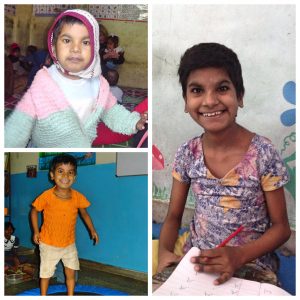 She was barely 5 when she first joined the special section. It must have been in 2004. She could barely walk or talk. She was like a tiny frightened bird that needed to be tamed. As days went by and we got to know her better the smiles came hesitant at first then bigger and bigger. And a few steps and some sounds. The ice was broken. It would not take long before Sapna was like a fist in water in the special section of Project Why. But all was not well for her mom whose story breaks your heart. Do read it. It is the story of too many women in India.
She was barely 5 when she first joined the special section. It must have been in 2004. She could barely walk or talk. She was like a tiny frightened bird that needed to be tamed. As days went by and we got to know her better the smiles came hesitant at first then bigger and bigger. And a few steps and some sounds. The ice was broken. It would not take long before Sapna was like a fist in water in the special section of Project Why. But all was not well for her mom whose story breaks your heart. Do read it. It is the story of too many women in India.
Sapna was happy at Project Why but came the day where the family moved and she left. There was no news. We hoped for the best and prayed for her well being.
A fews days back her father came to the Project. The news was terrible. Sapna’s mom had passed away in March. She had suffered enough. The father asked us if we would have her back and the answer was a loud YES!
So Sapna is back. She is 16 now and really small. But her smile is there larger than ever and she was so thrilled to see us all. She walks now and even speaks. It is a delight to have her back and her old pals Umesh and Anurag are thrilled.
For us it is bittersweet: a gentle reminder of the fragility of her existence. What if something happens to her father? What if he remarries? Endless questions with no answers. A visit to her home was heart wrenching. The family had very little. Her brother Monty has turned for the worse. He told us that he sold ‘slippers’ from midnight to dawn. He seems to have been targeted by predators.
For the time being Sapna is with us. We have convinced Monty to come to the centre in the morning and study some. Though he has paper saying that he has studied till class VII he can barely read or write.
How much will we be able to do for these two lost souls is anyone’s guess but we will give it our best shot. Sapna will be safe with us during the day. We fear for her when she is back home.
Once again the critical need for a residential option like Project Why comes to mind. It was for the Sapna’s of this world.
Child abuse casts a shadow the length of a lifetime #GivingTuesday #India
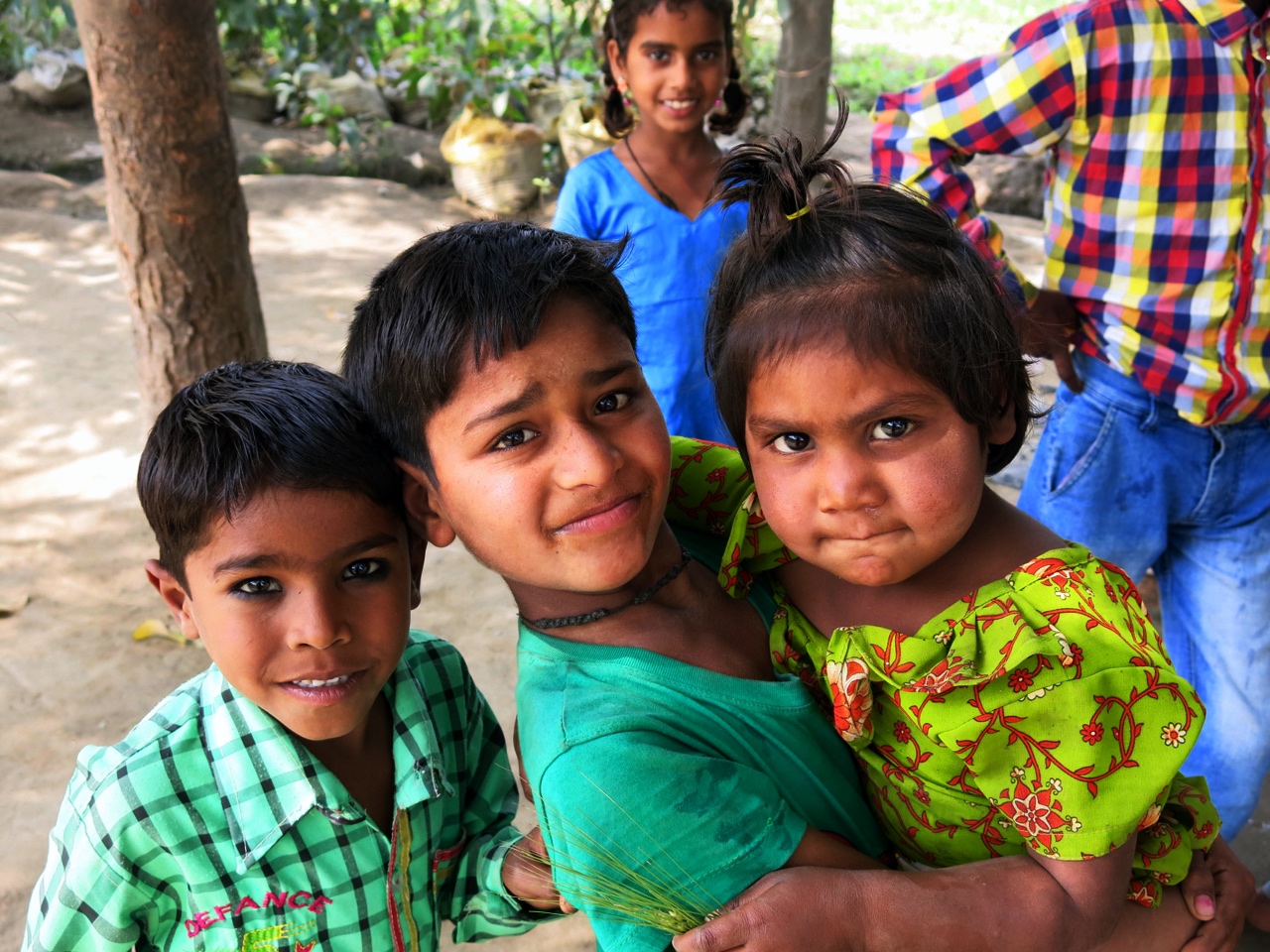
Child abuse casts a shadow the length of a lifetime. Scars heal but the pain never goes away. And yet child abuse is on the rise. Recent studies show that there has been a 50% rise in the crime against children rate. Increased urbanisation seems to be a contributing factor. We are talking of children akin to those who come to Project Why everyday. Rape of children have become ‘epidemic’ in India’s capital city. Recently a mentally challenged 13 year old was brutally raped and left to die. She battles for her life.
A 8 year old was raped, she escaped death by pretending to be dead. She had seen this happen in a TV serial! One never thought one would give a thumbs up to serial viewing by kids!
Another report states that over 300 000 children across India are drugged, beaten and forced to beg.
The list is endless, each child being one too many, each one making one’s blood go cold.
At Project Why we are aware of this reality.
The first programme Project Why launched was aimed at children begging. The idea was if people gave biscuits instead of coins, the supply-demand equation could be turned on its head. Sadly it did not meet with success. However the plight of beggar children is still one of the most disturbing ones, a deafening Why that remains unanswered.
The case of the mentally challenged child who was abused once again brings to mind Planet Why. The first and most important reason for its existence was to provide safe haven to souls just like this little one. That too remained unachieved.
Project Why has always been, remains and always will be child centric. We are aware that these children are always at risk as they live in harsh conditions. Okhla is a drug haven and children are preferred targets. Teachers keep an extra eye on each child for tell tale signs, ready to intervene when needed.
Child abuse is most often perpetrated within the four walls of home, and thus a well-hidden secret tinged in guilt. Project Why staff is conscious of this and keeps a quiet watch, looking for imperceptible evidence.
Moreover, regular workshops are held for staff and children and ‘good touch’ ‘bad touch’ is an intrinsic part of our curriculum.
We have sadly had some cases. They are far and few between but in the case of a child, one is too many!
A child rights activist rightly said that “Stringent punishment provisions are not just enough. The changing social fabric needs to be studied to take appropriate measures to make systemic changes.” This is long haul. Till then we need to keep our children safe.
To the manor born
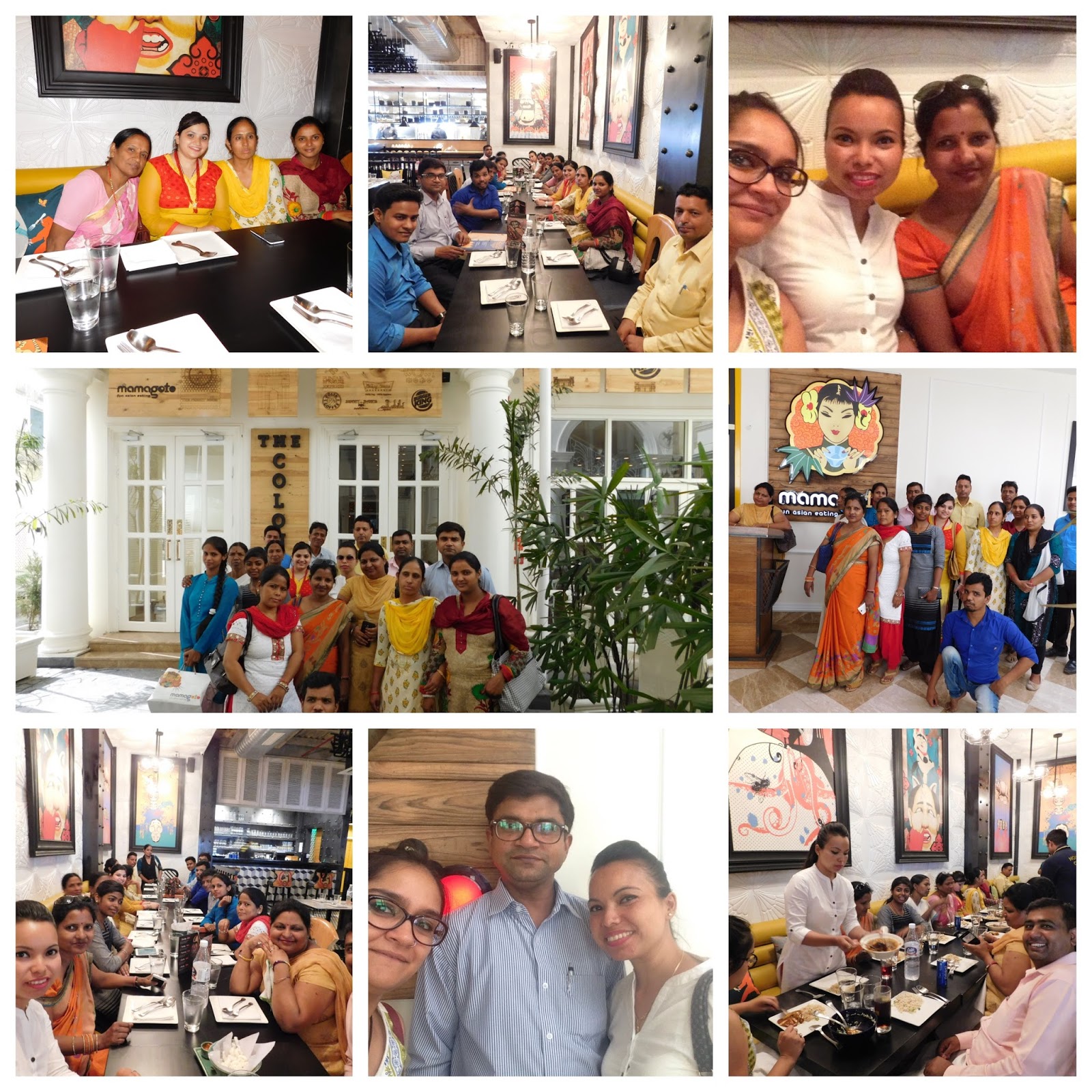
Our dearest friend Kabir of Azure Hospitality conjured another miracle. This time an invitation to a ‘posh’ lunch at the new Mamagoto in Connaught Place. For many of us lunch at a restaurant is a mundane affair. This is another story.
Most of the invitees had never been to a restaurant of this kind. Most of them probably never tasted high quality asian cuisine- a far cry from the chow mien or momos now available at every street corner. Many of them had never entered a restaurant of this class.
But the Project Why team team is to the manor born and no one would have guessed that this was a first!
The invitation was for 20 guests so students and teachers from each centre were selected. Every one was beautifully turned out and tasted new foods with enthusiasm. It was a merry party that lunched a the new Mamagoto on that sizzling day.
But all good things come to an end and so did that lunch.
To say that this is a memory that they will carry on their hearts forever is an understatement.
Two of the guests voiced their feelings.
One said this was probably the first and last enjoyable moment of his life.
The other simply said that this lunch was the happiest moment of her existence.
It is touching and humbling to see how an occurrence we take for granted gives such joy to those who rarely experience it.
Thank you Kabir and the Mamagoto team
They came, the saw, they cared #ThrowbackThursday #India
 |
Today we would like to walk down memory lane and talk of all the visitors we have had over the years. In most cases they return more than once. That is the magic of Project Why: once you walk in you leave a little bit of yourself and take a little bit of us.
We have many kinds of visitors, some who have become die-hard supporters and who make it a point to visit regularly. There are even Project Why tours organised by them! The best way to see how time has passed is to peruse the pictures and look at the children grow.
Some visitors come and share their skills. It could be a magic show, where tables flew and roses appeared, a brass band from France, a Flamenco class, a wall painted on Xmas night or a song written for Project Why and performed with the children. The time and care is touching.
They are of all ages and come from across the globe. A bunch of Cub Scouts from the American school decide to help their Okhla friends paint their school, a group of girls from the American school in Beirut came visiting too. An octogenarian from Australia came to share Mahatma Gandhi’s message.
They come and spend time with children not shying from dirtying their hands. They serve meals to the children at the Yamuna centre and even give pedicures to special kids!
They come bearing gifts or ready to get us what is needed. They respond to our appeals be it for state-of-the-art hearing aids or a roof that needs to be made.
One of the most touching group of visitors were students with special needs from France who came to meet their Indian friends. That day doors and lanes seemed to have grown large enough to welcome the elaborate wheel chairs. It was a magical moment when no language was needed to convey what was felt. Everyone danced and laughed to their heart’s content. Invitations were made and for an instant, one believed that Project Why’s special kids could maybe visit their French friends till reality struck: given the circumstances our kids would never get a passport. But one can dream and who knows? Dreams do come true.
Over the years, we have been privileged and blessed to have so many people come to Project and leave as friends forever. Those who cannot come back remain in touch and in our hearts forever.
Please do read the links in this post. They are precious memories
The Numbers Perspective #GivingTuesday #India
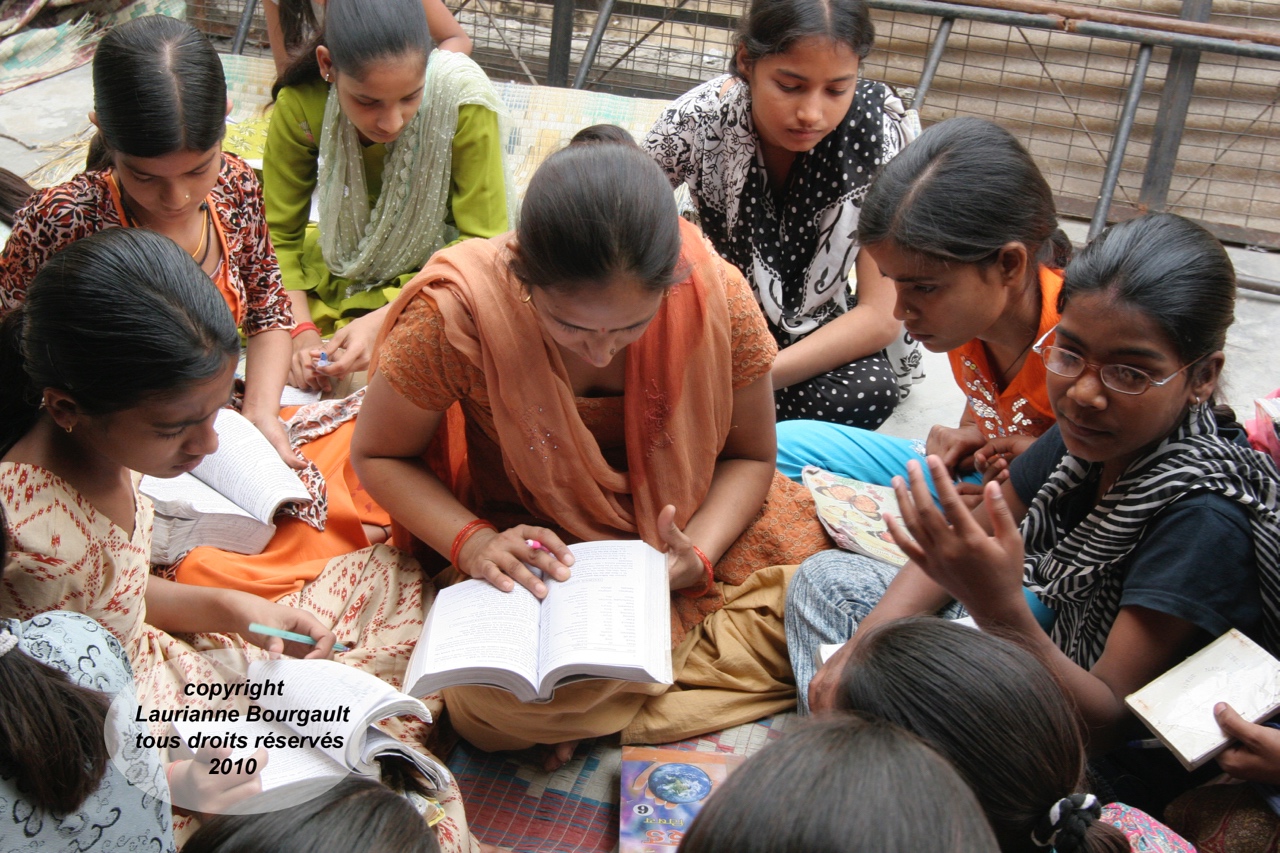 |
| Secondary Class at Khader |
The Numbers Perspective! Sounds like a title of a Robert Ludlum thriller doesn’t it? Come to think of it is is a thriller in its own right: the numbers referred to are the (ill)famed marks that a student secures in her or his class XII examination. They will the chart the child’s entire future.
The dentist comes calling #ProjectWhy #India
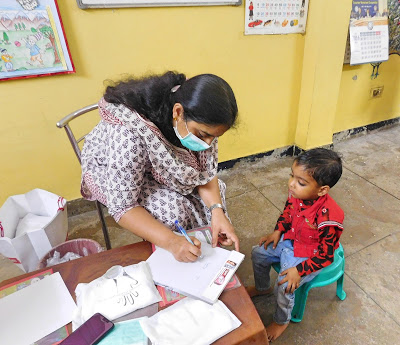
The dentist comes calling
It was dental checkup time for children from the special section, the creche and the primary section. This was the first dental check up at Project Why and was made possible thanks to our friend Neena Gulabani from the Anubhav Learning Centre. Two young dentists Rinku and Shweta spent the morning peering into small and not so small mouths. The children as always behaved perfectly though one or two of the tiny ones got a bit frightened. The doctors gave the children toothpaste and told them to brush TWICE a day. Some need dental care and we are working towards a solution.
The star of the day however was Ganga. She decided to express her gratitude and ours too by performing a lovely dance for the visiting doctors. It was such a special moment and we invite you to share it with us. What makes this so poignant is that little Ganga has a terrible skin condition that may be life threatening.
Sometimes God’s ways are difficult to understand for us mere mortals!
From Germany with Love #ThrowbackThursday # India
Enjoy some German moments at Project Why.
He who opens a school door, closes a prison #GivingTuesday #India
All children aspire to quality education; it is also their constitutional right. Sadly for many the aspiration remains a dream rarely fulfilled. In India for too many children quality education remains inaccessible. What they get is a wasted array of options all falling short, particularly for those born on the wrong side of the divide.
At Project Why we attempt to better the education imparted in State run schools to the best of our ability. We do somewhat succeed but are aware of the reality that so much more needs to be done to provide the enabling environment a child needs to bloom.
Amidst all our programmes there is a tiny one that ticks all the boxes. Seven children are being quietly educated in a boarding school on the outskirts of Delhi.
Many have been skeptical and even critical of this programme that sounds elitist and out of sync with the approach Project Why believes in. That is not quite the case.
Project Why is a firm believer in the neighbourhood state run school attended by children from diverse social strata. That was true once but over the years the advent and mushrooming of private schools that profess to teach English has seen the migration of many children till what is left in state run schools are the poorest of the poor. State run schools are no more level playing fields.
Yet the belief that children from the poorest homes can excel if given the right environment is something that Project Why believes in. When unforeseen and perilous circumstances arose and a child was in need of a safe environment, it was time to put theories to test and begin our boarding school programme, the best option to secure a enabling environment for a underprivileged child. Six others would follow.
The other question often posed, one that is ethical, was how was the selection of children made and why one and not the other. The answer to this question is that it was circumstances that led to the choice: two third degree burn survivors with dysfunctional homes; a young girl whose heart surgery was sponsored by Project Why and who instead of being in school was found working; a child who was adopted then abandoned. All were children who were at the risk of being exploited and abused.
This may not be a satisfying answer as there are millions of children in the same situation.
The only answer that can be given is that these kids were chosen by someone we like calling the God of Lesser Beings and we were His instrument.
When you see the pictures below, you will realise that some of these kids have been with us for many years, since when they were tiny. Their destiny was linked to that of Project Why. Once we held their hands there was no going back.
Sadafulee so that Project Why children bloom
Her name is Kashmira. She lives in the US and though she has never visited Project Why in person, she had been one of its staunchest supporters. She has walked into Project Why’s heart through a screen! Over the years she has supported our work financially, but more than that, her words of encouragement and love are sent before we ask for them, as if she knew intuitively that they were needed. The precious time she devotes to our children makes her so special.
A few years back she informed us about a jewelry crafting initiative,that she named Sadafulee – ever blooming – that she set for helping our kids. With every pearl she threaded and every knot Kashmira tied she wove dreams for little children she had never met. As she put it so well: “This venture comes from my passion for art and for helping underprivileged children. I plan to donate most of the proceeds from this store to a charity working with slum children in India. I am hoping the universe will help me grow this store to help the children to “always bloom”!
Recently when funds were needed to help Manisha get an artificial arm she was the first to take on the challenge and managed to raise much more than what was needed.
When funds were needed to help a desperate kid she decided to revive Sadafulee. Her absolutely stunning pieces are available through her Facebook Page.
We have no words to express our gratitude and love to Kashmira. The only way we can do it is by continuing the work we do with renewed commitment and energy
Thank you for being there for us, Kashmira
Alone we can do so little; together we can do so much #ThrowbackThursday
“Alone we can do so little; together we can do so much”
Helen Keller
How true these words are and Project Why is a proof of this. It was in very early days that Anou decided to source 100% of her team from within the community. The decision was instinctive. What was available were women with unfinished educations often due to early marriages, men who had obtained degrees from other states and could not find employment, and people in desperate conditions where a job, however small, meant food on the table. That is where most of Project Why’s team comes from.
In early days there were many doomsayers who believed that this experience would be a disaster and Project Why would have to walk the trodden path. But Project Why stuck to our guns and never looked back.
Project Why’s maverick team rose to meet expectations and performed with commitment, motivation and passion. These are the qualities that stand out and that are not to be found in people coming from the outside. For many, working at Project Why meant giving children the opportunities they never had. That is not all: being from the community they understand the needs and the solutions they offer are appropriate and work. They have allowed Project Why to truly address the real needs of the children.
Moreover we have a team that stays and those who left did for real reasons: relocation, marriage and in a few cases a better job- something we celebrate. Some left to start their own organisations. To be applauded!
n many cases Project Why has allowed many to climb a few rungs of the social ladder. As one staff member who is now married and a mom, told us, though she could get a better paid job in a factory, being called Ma’am on the street by her students and their parents is an honor and worth the lower salary.
Project Why has also prompted many of our staff, mostly women, to complete their unfinished studies. We are very proud of all of them. Some children who have been with us since early years are now teachers at Project Why. We have come a long way.
True, there are some challenges, mostly because all staff members have a very emotional tie to Project Why. Project Why stands with them all the way and it is this that makes the Project Why team formidable and invincible.
We invite you to meet them.
BEIRUT CALLING #GivingTuesday #India
It has been International Month at Project Why. First we had visitors from France, then from Japan and now hold your breath… from Lebanon! A group of twenty young girls from the American Community School: Beirut came to visit Project Why shepherded by our dear friend Chris of Hands Up Holidays. It was truly special to have visitors from a part of the world that has ben torn by war for so long.
As their arrival was delayed ,the visit was limited to the Okhla Centre. In spite of the terrible heat twenty sparkling smiles walked in. Soon the place was filled with palpable vibes. After a short introduction the girls proceeded to meet their Indian counterparts. The visitors were all class X and XI students and being afternoon, the secondary girls were on the roof. It did not take long for the two yet unknown worlds to meet and bond.
The girls danced to Bollywood and Arabic music, each one teaching the other their moves amidst laughter and giggles. All barriers were broken; it was just a bunch of young girls having fun together. There would be card and other games and even visits to homes as the Project Why girls wanted to show their Lebanese friends where hey lived.
Time flew. It was soon time to bid farewell with the hope that one would meet again.
Thank you, Chris for this wonderful opportunity
Enjoy some precious moments of this visit
One year of the Yamuna centre #ThrowbackThursday
有難う 御座います Yoshiki San #GivingTuesday
 |
| Yoshiki San and Doraemon |
Project Why has a Japanese connection. It goes back to 2003 when Naoko San visited the Project why with the Japanese Volunteer Group. A connection was made, one that lasts till date.
Thus began a relationship with ladies from the land of Doraemon and a bunch of slum children from India. The ladies would come regularly and spend time with the children teaching them the magic of Japanese craft and culture. In August 2005 we all celebrated the Tanabata festival where every child wrote her of his wish on a bright paper and tied it to the bamboo stems our Japanese friends had bought. The children even learnt a Japanese Song.
For the past year the Japanese Volunteer Group has been a steady and committed support. They have been there for us at every step of the way and meet our needs constantly. Be it a water cooler, a fan, mats for the children to sit on, stationery, sweaters and socks to keep warm in winter, our Japanes friends have always called ‘present’ to our need. When the Yamuna centre needed a roof, they collected funds and thus provided shelter from the cold and the heat. They also give the children school bags and supplies, school books, uniforms and sweaters.
A few months ago Ayumi San, a member of the group, contacted us and told us her husband’s company was willing to help us. Yoshiki San visited the Okhla centre a few weeks ago and it was decided that his company would build a shelter on the roof and provide two callers to beat the heat.
Last week Yoshiki San and his team visited the Centre and spent time with the children.
It was a wonderful morning where again many words met. The Japanese, their Indian colleagues and Project Why. Once again we were touched by the gentle mood that prevailed. Somehow whenever the Japanese come there is never a feeling of rush. Time seems to take on a different pace.
Yoshiko San and his team spent quality time with the Okhla and Yamuna children. We were pleasantly surprised to discover his drawing talent as he produced drawing after drawing of the children’s faces. Then it was time for the children to showcase their talent: Sanjay showed his yoga prowess and then the boys performed a stunning dance. Yoshiko San then spoke to the children and gave them wise counsel. He told them to believe in their dreams as dreams come true but for that they needed to study hard and listen to their teachers. The morning ended with a distribution of stationery and cakes.
The guests then moved on to the Yamuna centre. It was lunch time so they decided to serve the lunch. Then it was fun time with more laughter, more sharing and more caring. All barriers were broken as one and all intermingled with ease and joy.
Then it was time for goodbyes and promises to meet again.
So また会いましょう!Yoshiki San, till meet again
Enjoy some of the very special moment of this unforgettable day here:
Things never get back to the day they were #ThrowbackThursday
We would like to share their tiny life stories in the hope that these become their obituaries.
| SONU |
| ROHAN AND PUJA |
In spite of Project Why’s best efforts, the case was closed and the deaths deemed to be an accident. The life of two tiny slum kids is not worth fighting for.
She joined our crèche and was happy. One summer morning she came to class licking a bright pink candyfloss. She was in good spirits and went to class as usual. Sometime later she felt sick and was vomiting. We tended to her and she was soon back to her normal self. Later that night she got high fever and was taken to the local doctor who recommended she be taken to the hospital a good 40 minutes drive away. She never made it.
What killed Arati? The pain of losing her mother, poor nutrition, inadequate care, an abusive father who beat the children mercilessly, the quack unable to treat her, the long drive to the hospital or simply the total lack of love, one we were unable to make up for.
.
| RAJANI |
| ANIL |
| SANDHYA |
Sandhya was what they call a blue or cyanotic baby, where the heart is malformed and the blood deprived of oxygen. Since 1944 a simple surgery called a BT Shunt can repair the damage. For Sandhya’s family the cost was exorbitant, but friends pitched in and she was operated upon. However she did not make it. Maybe she knew that hers was not a life worth living in society’s eyes.
We had gotten her a state-of-the-art hearing aid and she was discovering new sounds and learning to speak.
One day she went to the village and contracted fever and was hospitalized but was not getting better. The state of medical facilities in our villages is rather poor. Her family brought her back and admitted her in a hospital in Delhi but it was too late. Once again God had other plans.
| NANHE |
Nanhe was born with a simple mind and a broken body where everything seemed wrong. In his short life he lived with excruciating pain and was subjected to humiliating investigations, painful jabs and uncounted operations. But he never lost his smile.
One may wonder what a little broken soul like Nanhe could mean to us, how a little seemingly useless being could become such an important part of one’s life. It is once again a matter of looking with one’s heart. Nanhe was undoubtedly an Angel that the God of Lesser Souls sent our way. His message was simple and clear: no matter what, life is still beautiful and no matter how bad it looks, it is still worth a smile. And the little chap lived by the book; even in his worst moments of pain, he never lost his smile. And when you looked at him smiling you suddenly felt uplifted. No matter where and when, in a hospital ward where he lay or in his tiny hovel Nanhe smiled.
Today he smiles in heaven.
| SOHAIL |
It did not take long for everyone to fall in love with little Sohail, with his huge head, tiny body, shrill voice and incredible smile. He had hydrocephalus, a condition when fluid builds up in the skull and causes the brain to swell and leads to brain damage. Sohail had difficulty in maintaining his balance and walked awkwardly. Yet he loved dancing and would do so leaning against a wall. He was a clever imp!
His parents talked of an operation, actually the placing of a shunt to drain the fluids. This operation was not without risk as it could leave him paralysed. A date was fixed but as is always the case in India, the day given was a year away. In the meantime we began alternative therapies which helped him walk better. We had high hopes.
But that was not to be. A simple fall in his home was all it took for his soul to fly away.
| MANU |
One death we mourn every day is that of Manu, the challenged beggar who was the reason for Project Why to begin. If there was one meaning to his wretched life, it was to teach us all that no life however miserable is worthless and every life has a mission. His was to set up Project Why. This would take more than two decades of wandering in filth, two decades of being riled and abused, two decades of walking the same beat so as not to miss the moment when that person would come and the two would meet.
Manu would live another decade beyond that tryst. His presence would take care of the faltering steps, the doubts and uncertainties, the moments when giving up seemed an option. All it took to get on course was his smile. Any giving up would be an insult to his life.
One day Manu knew it was time to go. The foundations were strong and the edifice would last. It was time for him to report back to his Maker.
For us it was time to honour his memory and ensure Project Why would endure.
God Bless these little souls. Each one marked our lives and made is better people.
May they Rest in Peace
Project Why’s French Connection #GivingTuesday
It was French Week at Project Why. A group of members of Enfances Indiennes, visited Project Why and gave its children a French Break!
Project Why’s French Connection is strong and steadfast. Not surprising as its founder had deep links with France! But the real bond began over a decade ago when the visit of a man with a huge heart led to the setting up a support group in France called Enfances Indiennes. Every alternate a year a group from this organisation visits Delhi and spends time with the children of Project Why.
This year the children were in for a surprise. Enfances Indiennes decided to take some of the children for an outing. But that is not all. This visit would be the coming together of the two Indias. Let me explain. Another man with huge heart -who has been providing lunch to the Yamuna children and spearheaded a donations campaign through his many restaurants across India- decided to board the wagon. The result: a visit to an industrial kitchen and a talk on career options followed by a scrumptious lunch and a special treat for the Yamuna children.
The chefs who brought the food to the children experienced a magical moment as the chefs discovered the little persons they had been cooking for. Their resolve to do more was visible in their eyes. Again one India was meeting another.
There was another added surprise: a visit to the Science Museum and India Gate for all the Yamuna centre kids. These children had NEVER been out of their fields.
Xavier (Enfances Indiennes) and Kabir (Mamagoto) were there too to make the picture perfect.
The Yamuna children, who live in a bubble in the heart of the big city they have never visited set off in the big blue bus. There were many such sights, ones we take for granted and have even stopped seeing. For these kids, however, all was new and welcomed with loud clapping and joyful shrieks. A real eye opener. After visiting India Gate came ice cream time: the famous orange bar! They had completed the rite of passage of every Delhi kid.
The visit to the museum was also exciting. The children were welcomed by the staff of the museum who guided them through the many wonders. Our thoughts go them as a day later this very museum was completely destroyed by fire.
The last event on the calendar was a lunch at Anou’s with the 7 boarding school kids. Everyone had a great time.
Project Why’s French Connection is one of a kind as it has the magic wand that brings the two sides of India together in a celebration of all that is good in the world.
Enjoy some special moments
Into the twilight
Six years ago, I gathered the courage to write a requiem for a dream. The dream was Planet Why the guest house with a difference that would have allowed Project Why to be sustainable. In a nutshell, Planet Why was a guest house indeed, but would have also been home to Project Why’s special needs children when their family support dwindled with time as parents faded away and the next generation took over. The gentle souls once loved and cared for would suddenly find themselves at the mercy of people who considered them a nuisance. That is the plight of mentally challenged people in a country that has scant support for them. They too fade away in a tiny corner of a home where they are not wanted, let alone loved.
This happens across the board, in rich as well as poor homes; the difference is an invisible golden cage versus iron bars.
This was a reality one became aware of very early in Project Why’s journey. Manu was the perfect example.
Hence, no matter what direction the dream took, there was a constant: Planet Why would be a place where the special children of Project Why could live and die with dignity, a place where they were loved and tended to till their last breath.
Planet Why was not to be. At first a series of serendipities made us believe that everything would happen. The land was bought, feasibility studies done, architectural plans drafted, budgets made. However we were unable to find the needed funds, in spite many promises. Finally the dream had to be laid to rest. Manu for whom it all began breathed his last leaving us lost and looking for direction.
Planet Why too was relegated to some obscure corner of our minds.
But dreams have a nagging way of remaining at the surface and need a simple prompt to come alive. They never truly die.
This is what happened recently.
For the past weeks S our die hard special section inmate has been absent. In the initial days we thought it was yet another mood swing and she would be back. When more days passed a phone call was made and we were informed that her mother was sick and wanted Shalu near her. This was understandable as her mother had been ailing for some time. More time passed and it was decided to go and visit her to find out the situation and offer assistance if needed.
The reality left us speechless. S’s mom is in a bad way and the house in being looked after by Shalu. That is not all. There is a baby a few weeks old that is also left in her care. It was heart wrenching to see her scuttle around trying to do her best with a smile, knowing in her heart that her mom is very ill. It was heartbreaking to see the unspoken question in the mother’s eyes” what would happen to her child after she left? It was heart wrenching for us to have no answer.
The girl we saw was a far cry from the often stubborn and yet adorable little woman who is the soul and spirit of her class. A mean dancer S is always at the forefront of every fun activity and can bring a smile on the sternest face.
It was uncanny how everyone who visited her immediately thought of Planet Why! Never was the need of Planet Why more real than at this moment. It was for people like S that Planet Why was conceived. A place where she could dance with abandon into the twilight.
 |
| The Planet Why Land |
 |
| This is what Planet Why would have looked like! |
Damyanti (w)rites for Project Why #
Project Why has taught me two values often forgotten: compassion and gratitude. If one is the art of giving, the other is that of receiving. When we talk of giving, our minds tend to veer towards money; often charity is equated to funds and undoubtedly it is a huge part of any charitable venture. Yet the kind of giving I am talking about here is not at all about money.
I write this post to convey my deepest gratitude to a wonderful soul who has never stopped giving to Project Why. I am talking of Damyanti Gosh of Damyanti (w)rites! From the very instant she came into Project Why’s orbit and adopted us as a preferred child, she began giving. This was before she even met any of us in person! Damyanti has always been there for Project Why. She has helped us in every way possible and is still doing so by giving us her time, her knowledge, her counsel, her advice, her love, and even funds when needed most.
Today she is helping us put our house in order and take our first steps on the road to sustainability by giving Project Why a much needed makeover.
When I first met her I was bowled over by her incredible smile that can light up the darkest hour; probably that is the biggest gift of all for me personally. I do not feel alone anymore.
I thank this beautiful soul for a very precious gift. For any writer, creativity is a very personal space you do not want to share with anyone. It is your personal happy place, the bubble you hide in when you want to be just you and one that you jealously guard. Imagine my absolute delight when she told me that she would ‘give’ that space for one whole month to Project Why as part of her A to Z challenge.
For the past 26 days every story in Damyanti’s blog has been a Project Why chronicle, each crafted with love and tenderness. She evokes every aspect of Project Why, be it the people or the causes, with restrained and dainty strokes that make you want to know more. And that is what she has set out to do: take Project Why to the world even if it meant sharing her own personal world.
No words can express the feeling of gratitude that overwhelms me. It is a privilege and honour to know Damyanti. There must be some higher force at work here.
Gypsy Souls #ThrowbackThursday
| If we exist then He exists; if we do not then how can He! (on the existence God) Tau Head of the Rana Pratap Lohar Camp |
“Have you ever met someone for the first time, but in your heart you feel as if you’ve met them before?” wrote JoAnne Kendrick. This is exactly the feeling Project Why had when it first saw the Lohars of Rana Pratap camp.
The Lohars are a nomadic Indian tribe of ironsmiths. They hail from Rajasthan (Chittorgarh) where they accompanied the ruler in battle to repair arms and shoe horses. When Maharana Pratap Singh lost the battle of Haldigath in 1576 and went into exile, the Gadia Lohars swore to wander and never settle. And they have been wandering ever since. After independence in 1947, about 100 clans came to Delhi and settled in different parts of the city, along roadsides where they continued to practice their trades and live under the sky. One such camp was located close to Project Why.
It was in 2005 that Project Why first saw the children of the camp and was completely bowled over. These were bright kids with sparkling, eager eyes and smiles to die for. Unlike other children they seemed fearless and eager to connect. Here was another Why that needed to be answered but there was a hitch: convince Tau, the Head of the Clan.
It took a few minutes for Anou to succumb to the wisdom and kindness of this gentle soul. An unlikely yet real friendship was born between them. For the 5 years the camp remained standing, Anou would often go missing to be found sipping tea and in deep conversation with Tau.
Life in these makeshift camps in not easy. The camp is located next to a red light where cars rev and the air is foul. And yet over 100 people, old and young lived there with utmost dignity. They never stopped smiling. Never mind if water had to be carried across a busy road; never mind if every so often the authorities came and destroyed the camp in a cat and mouse game that had its own rules; never mind the bitter cold or scorching heat that entered their flimsy homes. Life was a celebration and who better than gypsies to celebrate life to its fullest.
If the men beat the iron it is left to the women to sell the wares. The money collected would determine what would be eaten in the evening.
Project Why ran a creche and a primary centre for the children of this camp and it was a joy to teach these eager beavers.
That is not where it ends. The plight of these people and the discovery that there were promises made to them- as validated by the few scraps of official papers that had survived the many destructions of the camp- led Project Why to taken on its first activist challenge. A PIL (public interest litigation) was filed in the High Court. Sadly nothing came of it.
The Lohars of Rana Pratap camp survived many destructions but the Commonwealth Games in 2010 would be their nemesis, as the camp would be destroyed and the 30 odd families scattered across the city.
The stretch of road where they lived that was such a vibrant and happy place is now a stretch of sidewalk. Each time one drives past, one is overwhelmed by a feeling of loss and sadness. The Lohars are missed dearly by all at Project Why.
Nomads always move on, don’t they
You can share some glimpses of their lives in these images.
Mercury Rising #GivingTuesday
| waiting for water |
This picture was taken near the Project Why Okhla Centre at the time when the tanker delivers water for an entire community. This is when children dash out of class to reach the tanker in time, having already placed their buckets or cans well in advance. This is also when we do not interfere, as Project Why is no match for WATER!
In most slums in Delhi taps run dry in summer and water is supplied through tankers. You have to fill enough water for all household chores until the next tanker arrives. For those of us who have access to tap water and the means to create sufficient back up, it is impossible to imagine what it means to survive with a few pans of water.
The heat is on and the mercury is rising. It touched 44 C a few days back. A few moments in this scorching heat is enough to send your head spinning and make you long for an air conditioned room. Some of us have that luxury, but for those living in slums the story is different.
Many of the homes in the slums have corrugated iron or asbestos roofs and ceilings that are so low an adult cannot stand. The only opening is the door. There are no windows or any form of ventilation. The tiny space is often shared by five or six people.
In the day these tenements turn into ovens, making it impossible to sit inside them. This is when women sit outside their doors, the men simply go out, the children run around in the sun. The sky is better than an asbestos sheet.
Project Why is a place where children can come to stay cool. The space is large; we have fans and coolers to provide respite and a place to study. That is one of the reasons why from day one, Project Why decided to remain open during the summer holidays as that is a time when children need us most. Boys and girls come together and as many have gone to the villages, we are able to accommodate the ones who stayed behind.
Summer is another moment which requires the survival tactics of those who have so little. Complaints are few if any and smiles are ever present.
| a house in the slum |
| Durga’s home |
| welcome drink |
| cooling in the park |
| Ice cream man |
| orange juice to the rescue |

